The link between SARS-CoV-2, engineered spike protein and amyotrophic lateral sclerosis (ALS)
Reading time:
short story - novelette - novella - novel - PhD thesis - Trump’s tariff list - War and Peace - U.S. Tax Code
Any extracts used in the following article are for non-commercial research and educational purposes only and may be subject to copyright from their respective owners.
Contents
5.0 Disclaimer
1.0 Introduction
A break from the usual format, this Substack is a write-up of some important recent work discussing a key signalling pathway linked to SARS-CoV-2. We used X as the platform.
My friend and colleague, the brilliant biochemist @AnneliseBocquet put out a call to collaborate on researching the p53/SIRT1/HMGB1/RAGE pathway, particularly in relation to spike protein and dysbiosis.
You could write volumes about this pathway alone, but a comprehensive post that discusses everything in one hit is a recipe for information overload. I will break it down further into manageable steps over the coming months.
I decided to focus on two “mitochondrial metabolism” miRNAs from this pathway. These play a significant role in several COVID-related pathologies: miR-2392 and especially miR-34-a. Both of these are tumour suppressors.
As part of this work, I hypothesised that, as they contribute to neurotoxicity, miR-34-a may be involved in the progression of ALS. I was curious as to what links there may be, due to a recent surge in cases being reported by the MSM.
It soon became apparent that another researcher, @MeasslainteIRL, has also been looking into this, so we pooled our findings on X. This Substack shares our work and suggests some alternative therapeutics.
N.B. This is not a definitive text, and we offer no cures. There are different types of ALS, and many contributory mechanisms to a lesser or greater degree. It’s a subject I revisit if new papers are presented:
2.0 Discussion
2.1 Overview of the p53/SIRT1/HMGB1/RAGE signalling pathway
I promise to keep this as brief as possible. Definitions from Wiki.
p53:
“p53, also known as tumor protein p53, TP53, cellular tumor antigen p53 (UniProt name), or transformation-related protein 53 (TRP53) is a regulatory transcription factor protein that is often mutated in human cancers. The p53 proteins (originally thought to be, and often spoken of as, a single protein) are crucial in vertebrates, where they prevent cancer formation.[5] As such, p53 has been described as "the guardian of the genome" because of its role in conserving stability by preventing genome mutation.[6] Hence TP53[note 1] is classified as a tumor suppressor gene.[7][8][9][10][11]”
SIRT1:
“Sirtuin 1, also known as NAD-dependent deacetylase sirtuin-1, is a protein that in humans is encoded by the SIRT1 gene.[5][6][7].
SIRT1 stands for sirtuin (silent mating type information regulation 2 homolog) 1 (S. cerevisiae), referring to the fact that its sirtuin homolog (biological equivalent across species) in yeast (Saccharomyces cerevisiae) is Sir2.SIRT1 is an enzyme located primarily in the cell nucleus that deacetylates transcription factors that contribute to cellular regulation (reaction to stressors, longevity).[8][9]”
SIRT1 and p53 regulate each other:
“The functions of human sirtuins have not yet been determined; however, yeast sirtuin proteins are known to regulate epigenetic gene silencing and suppress recombination of rDNA. The protein encoded by this gene is included in class I of the sirtuin family.[6]
Sirtuin 1 is downregulated in cells that have high insulin resistance.[10] Furthermore, SIRT1 was shown to de-acetylate and affect the activity of both members of the PGC1-alpha/ERR-alpha complex, which are essential metabolic regulatory transcription factors.[11][12]
In vitro, SIRT1 has been shown to deacetylate and thereby deactivate the p53 protein,[13] and may have a role in activating T helper 17 cells.[14]”
HMBG1:
“High mobility group box 1 protein, also known as high-mobility group protein 1 (HMG-1) and amphoterin, is a protein that in humans is encoded by the HMGB1 gene.[3][4]
HMG-1 belongs to the high mobility group and contains a HMG-box domain.
… HMGB1 is secreted by immune cells (e.g. macrophages, monocytes and dendritic cells) through leaderless secretory pathway.[6] Activated macrophages and monocytes secrete HMGB1 as a cytokine mediator of inflammation.[9] Antibodies that neutralize HMGB1 confer protection against damage and tissue injury during arthritis, colitis, ischemia, sepsis, endotoxemia, and systemic lupus erythematosus.[citation needed] The mechanism of inflammation and damage consists of binding to toll-like receptor TLR2 and TLR4, which mediates HMGB1-dependent activation of macrophage cytokine release. This positions HMGB1 at the intersection of sterile and infectious inflammatory responses.[10][11]”
RAGE:
“RAGE (receptor for advanced glycation end-products), also called AGER, is a 35 kilodalton transmembrane receptor[5] of the immunoglobulin super family which was first characterized in 1992 by Neeper et al.[6] Its name comes from its ability to bind advanced glycation end-products (AGEs), which include chiefly glycoproteins, the glycans of which have been modified non-enzymatically through the Maillard reaction.
In view of its inflammatory function in innate immunity and its ability to detect a class of ligands through a common structural motif, RAGE is often referred to as a pattern recognition receptor. RAGE also has at least one other agonistic ligand: high mobility group protein B1 (HMGB1). HMGB1 is an intracellular DNA-binding protein important in chromatin remodeling which can be released by necrotic cells passively, and by active secretion from macrophages, natural killer cells, and dendritic cells.
The interaction between RAGE and its ligands is thought to result in pro-inflammatory gene activation.[7][8] Due to an enhanced level of RAGE ligands in diabetes or other chronic disorders, this receptor is hypothesised to have a causative effect in a range of inflammatory diseases such as diabetic complications, Alzheimer's disease and even some tumors.”
MicroRNA (miRNA):
“Micro ribonucleic acid (microRNA, miRNA, μRNA) are small, single-stranded, non-coding RNA molecules containing 21–23 nucleotides.[1] Found in plants, animals, and even some viruses, miRNAs are involved in RNA silencing and post-transcriptional regulation of gene expression.[2][3] miRNAs base-pair to complementary sequences in messenger RNA (mRNA) molecules,[4] then silence said mRNA molecules by one or more of the following processes:[1][5]
Cleaving the mRNA strand into two pieces.
Destabilizing the mRNA by shortening its poly(A) tail.
Reducing translation of the mRNA into proteins.
In cells of humans and other animals, miRNAs primarily act by destabilizing the mRNA.[6][7]
… The first miRNA was discovered in the early 1990s.[19] However, they were not recognized as a distinct class of biological regulators until the early 2000s.
… The first miRNA was discovered in 1993 by a group led by Victor Ambros and including Lee and Feinbaum. However, additional insight into its mode of action required simultaneously published work by Gary Ruvkun's team, including Wightman and Ha.[19][37] These groups published back-to-back papers on the lin-4 gene, which was known to control the timing of C. elegans larval development by repressing the lin-14 gene. When Lee et al. isolated the lin-4 miRNA, they found that instead of producing an mRNA encoding a protein, it produced short non-coding RNAs, one of which was a ~22-nucleotide RNA that contained sequences partially complementary to multiple sequences in the 3' UTR of the lin-14 mRNA.[19] This complementarity was proposed to inhibit the translation of the lin-14 mRNA into the LIN-14 protein. At the time, the lin-4 small RNA was thought to be a nematode idiosyncrasy.”
miR34-a:
“The miR-34 microRNA precursor family are non-coding RNA molecules that, in mammals, give rise to three major mature miRNAs. The miR-34 family members were discovered computationally[1] and later verified experimentally.[2][3] The precursor miRNA stem-loop is processed in the cytoplasm of the cell, with the predominant miR-34 mature sequence excised from the 5' arm of the hairpin.[4]”
miR-34 interacts with both SIRT1 and p53, acting as a tumour suppressor:
“… Yamakuchi et al.. showed that miR-34a targets the silent information regulator 1 (SIRT1) gene:[7]
‘miR-34 inhibition of SIRT1 leads to an increase in acetylated p53 and expression of p21 and PUMA, transcriptional targets of p53 that regulate the cell cycle and apoptosis, respectively. Furthermore, miR-34 suppression of SIRT1 ultimately leads to apoptosis in WT human colon cancer cells but not in human colon cancer cells lacking p53. Finally, miR-34a itself is a transcriptional target of p53, suggesting a positive feedback loop between p53 and miR-34a. Thus, miR-34a functions as a tumor suppressor, in part, through a SIRT1-p53 pathway.’[7]”
In short, p53/SIRT1/HMGB1/RAGE is an inflammatory pathway that may be linked to SARS-CoV-2 and engineered spike protein. Associated pathologies of significance include diabetes, cancers, and neurological disorders, including ALS.
Upstream of this, SARS-CoV-2 spike protein binding ACE-2 rapidly elevates cellular reactive oxygen species (ROS). Oxidative stress then disrupts the miR-34a-5p/SIRT1/p53 axis1. This links both viral and synthetic mRNA gene therapy-generated spike protein to the progression of neurological disorders, including ALS.
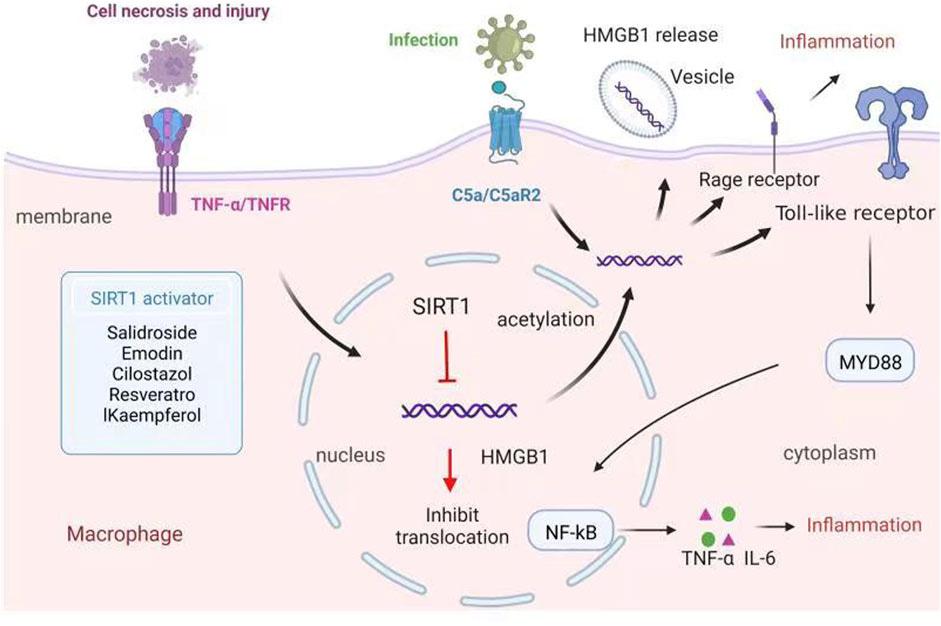
2.2 Amyotrophic Lateral Sclerosis
OK, so what is ALS? Also known as Lou Gehrig’s Disease or Motor Neurone Disease (MND), most of us are at least familiar with more famous sufferers, such as the late Prof. Stephen Hawking.
… ALS is the most common adult-onset motor neuron disease. It is characterized by both upper and lower motor neuron degeneration and has a median survival of 2–4 years6.
The worldwide annual incidence of ALS is about 1.9 per 100,000 (ref. 7), with uniform rates in Caucasian populations and lower rates in African, Asian and Hispanic populations8.
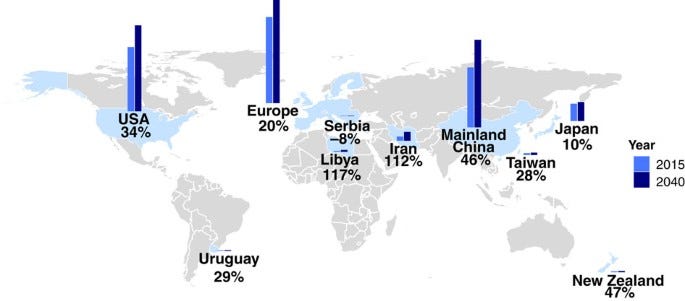
… The data for ALS are similar to the projected trend of Parkinson’s disease where the number of individuals with this form of neurodegenerative disease will double between 2005 and 2030 (ref. 3). Furthermore, the weight of ALS will continue to shift towards the developing world, a trend also expected with Parkinson’s disease. These data mirror the prediction that chronic disease will increase in the coming years due to ageing of the population2.
From: “Projected increase in amyotrophic lateral sclerosis from 2015 to 2040“ (2016)
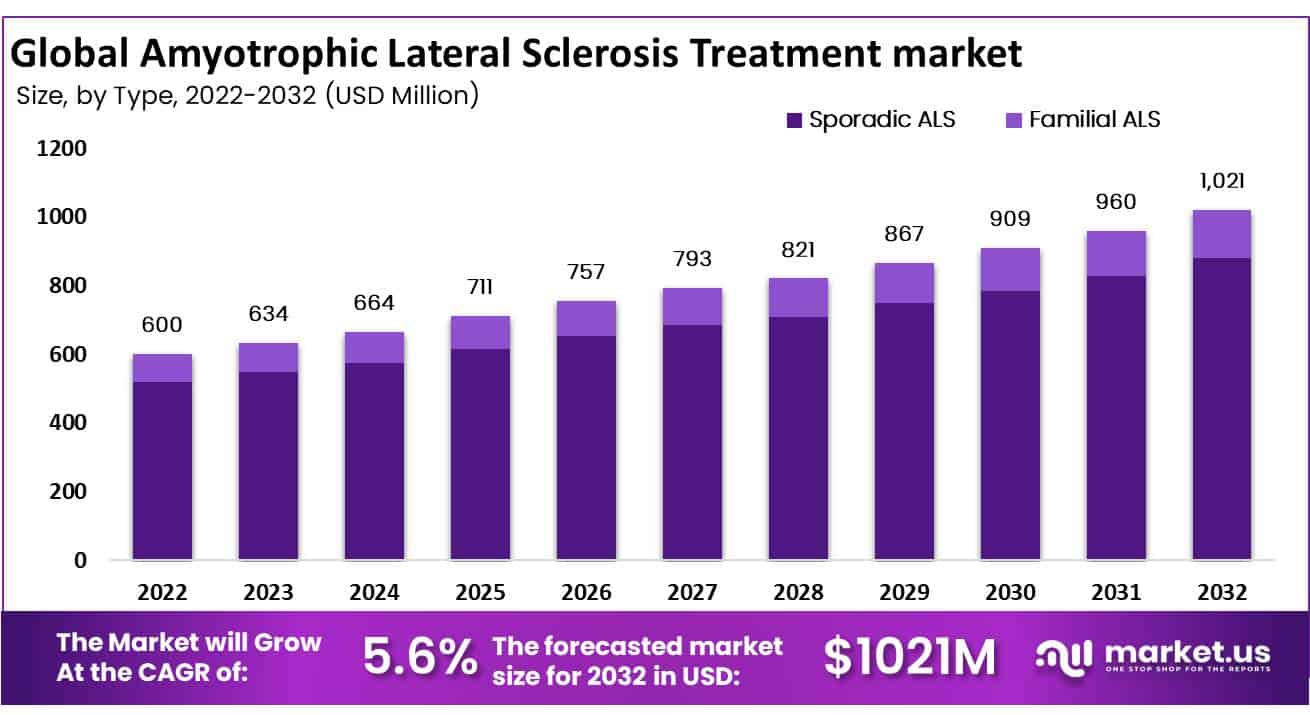
Lou Gehrig and the History of ALS
”Amyotrophic” comes from the Greek language. "A" means no. "Myo" refers to muscle. "Trophic" means nourishment. So, amyotrophic means "no muscle nourishment,” and when a muscle has no nourishment, it "atrophies" or wastes away.
"Lateral" identifies the areas in a person's spinal cord where portions of the nerve cells that signal and control the muscles are located.
As this area degenerates, it leads to scarring or hardening ("sclerosis") in the region.
The disease was identified in 1869 by French neurologist Jean-Martin Charcot and became more widely known internationally on June 2, 1941, when it ended the career of one of baseball’s most beloved players, Lou Gehrig. For many years, ALS was commonly known as Lou Gehrig’s disease.
Gehrig played with the New York Yankees for 17 years and received the moniker “The Iron Horse” due to his ability to play baseball despite suffering from a variety of injuries.
Born in New York City to the son of German immigrants, Heinrich and Christina Gehrig, Gehrig attended Columbia University on a football scholarship to study engineering, yet he also played the sport for which he is best known during his tenure at the Ivy League school.
A baseball scout signed Gehrig to the Yankees in 1923 due to his remarkable hitting skills. He held various positions on the team until his retirement, including shortstop and outfielder; however, many know him best as the Yankees’ first baseman.
Gehrig garnered many achievements in his career. He hit 493 home runs; held the record for most grand slams in a career (23) until 2013; and established a record for playing 2,130 consecutive professional baseball games. The Yankees also made him the first athlete to have a jersey number retired.
Gehrig was diagnosed with ALS on his 36th birthday during a visit with his wife Eleanor to the Mayo Clinic in Rochester, Minnesota, on June 19, 1939. Prior to his diagnosis, Gehrig noticed several of the disease’s symptoms while playing on the field, including a loss of strength, slipping, falling and loss of coordination.
Shortly after his diagnosis, Gehrig chose to retire from baseball. The Yankees designated July 4, 1939, “Lou Gehrig Appreciation Day” at Yankee Stadium, and honored its former first baseman for his sportsman-like behavior and dedication to the game.
On that day, nearly 62,000 fans listened to Gehrig give his famous speech where he deemed himself “the luckiest man on the face of the earth.”
On June 2, 2021, Major League Baseball (MLB) launched the inaugural Lou Gehrig Day across the MLB network. This day is intended to honor the famed “Iron Horse,” and raise nationwide awareness of ALS and engage more people in the fight against this insidious disease.
… While ALS can affect anyone, anywhere, at any time, there are two different ways cases are categorized.
For about 90% of all cases, there’s no known family history of the disease or presence of a genetic mutation linked to ALS.
For 5-10% of all cases, there’s a known family history of the disease. This is often called familial ALS.
In families with familial ALS, there is a 50% chance each offspring will inherit the gene mutation and may develop the disease.
For unknown reasons, military veterans are more likely to be diagnosed with the disease than the general public.
A wealth of new scientific understanding about the physiology ALS has occurred in recent years. There are currently seven drugs approved by the U.S. Food and Drug Administration (FDA) to treat ALS and its symptoms: Qalsody, RELYVRIO, Radicava, Rilutek, Tiglutik, Exservan and Nuedexta.
UPDATE – APRIL 2024: Relyvrio was voluntarily withdrawn from the market by Amylyx following a phase 3 trial that failed to show it was effective.
More: https://www.als.org
There is no single, identifiable cause.
Our work overlaps with theories about mitochondrial dysfunction, myeloid-derived suppressor cells (MDSCs), and neurodegeneration:
Etiology
A single and precise etiology governing ALS is lacking. The possible mechanisms described in the literature are genetic mutations, oxidative stress, excitotoxicity, mitochondrial and proteasomal dysfunctions, altered synaptic function, disturbed axonal transport, and neuroinflammation.[3][4] The risk variables include sports with a high incidence of concussions, military jobs, smoking, exposure to heavy metals (lead, manganese), pesticides, neurotoxins (cyanobacteria), and electromagnetic fields.[1][5] It appears that ALS develops as a result of the interaction between both genetic and environmental factors.
Over 120 genes have been implicated in ALS.[1][6] A prevailing thought is that the accumulation of abnormal proteins due to aberrant RNA processing is involved in the development of ALS. Variants of TDP-43 and FUS, two genes for RNA binding proteins, are involved in familial ALS.[7] Patients with variant forms of these genes will have TDP-43 and FUS proteins found primarily in the cytoplasm instead of the nucleus, causing neurodegeneration. In addition, a non-coding stretch of hexanucleotide repeats (to hundreds or thousands) of C9ORF72, which plays a pivotal role in membrane trafficking and autophagy, is the most commonly mutated gene associated with ALS (45% in familial and 7% of sporadic ALS compared to 20% for SOD1).[1][7] Mutations to this gene are also involved in the development of frontotemporal dementia (FTD). Patients with this genetic mutation may develop only ALS, only FTD, or a combination of both. Approximately 50% of people with C9ORF72 expansions develop ALS by age 60 and nearly 100% by age 80.[5]
Superoxide dismutase 1 (SOD1), responsible for converting superoxide radicals to oxygen and hydrogen peroxide, was the first gene discovered in 1993. This prompted the belief that altered protein synthesis is the primary mechanism involved with SOD1 variant ALS (20% of familial cases and 1% of sporadic cases). Cytoskeletal variables such as dynactin 1 (controls retrograde axonal transport), PFN1 (governs the conversion of globular to filamentous actin and nerve extension), and Tubulin 4A (regulates microtubules) are also implicated.[1] The functional deficits at the neuromuscular junction (NMJ) have been observed at least 6 weeks prior to the onset of motor symptoms.[8] SOD1 and profilin 1 (PFN1) are the most commonly applied models for animal studies.[1] The possible role of the brain-gut-microbiota axis in pathogenesis has also been described.[9]
Dr Bocquet’s work on the p53/SIRT1/HMGB1/RAGE signalling pathway and ALS
Threads from X, translated. Emphasis mine:
Annelise:
This is not a competition... What interests me is finding solutions and moving forward with scientific data. Many "small accounts" have done an extraordinary job. And here, I would like us to delve into the Spike/p53/SIRT1/HMGB1/RAGE -> dysbiosis + mitochondrial dysfunction relationships... https://x.com/AnneliseBocquet/status/1931292992188424629?t=SfcVsGXaE3dK_kUWSf6jEg&s=19…
A little help wouldn't go amiss... Thank you
My first response, after looking over the challenge at hand!
Spike/p53/SIRT1/HMGB1/RAGE + mitochondria - La biologie systémique? https://medecinesciences.org/en/articles/medsci/full_html/2009/08/medsci2009256-7p578/medsci2009256-7p578.html
I’m highlighting the potential use of systems biology here, due to the complexity of ALS, and feedback loops:
Systems biology represents an important scientific paradigm shift compared to molecular biology of the last fifty years.
Traditional molecular biology, of a "reductionist" nature, has so far focused mainly on the characterization of the individual components of the cell, genes, proteins, or non-coding RNAs, with the aim of understanding life from the characterization of the macromolecules that constitute it.
However, proteins and RNA operate by interacting with each other, forming systems whose complexity is difficult to understand one molecule at a time.
Systems biology, which is "integrative and holistic" in nature, aims to understand life from these systems. It poses biological questions by emphasizing the "whole" rather than the "parts."
Intrinsically interdisciplinary, its original methodology is defined by a dynamic back-and-forth between experimentation, computer and theoretical work, formulation of new scientific hypotheses and technological development.
Translated from: “Systems biology: from yesterday's concepts to tomorrow's discoveries”
Annelise:
The thread aligns with recent research linking SIRT1 and p53 pathways to mitochondrial dysfunction and inflammation, as seen in a 2025 study on intestinal dysbiosis and aging. https://mdpi.com/1422-0067/22/3/1233… Spike protein interactions with p53, as mentioned, have gained attention following a 2024 report on long-term effects of COVID-19 vaccines, suggesting potential mitochondrial impacts. Other mechanisms : https://x.com/AnneliseBocquet/status/1771988363966365784?t=aTkSzsxAsUTzixlBlqlNzA&s=19… https://x.com/AnneliseBocquet/status/1917858683360342076?t=aTkSzsxAsUTzixlBlqlNzA&s=19… https://x.com/AnneliseBocquet/status/1923632398488535516?t=aTkSzsxAsUTzixlBlqlNzA&s=19… RAGE-mediated inflammation, a key point in the thread, connects to ongoing studies on Alzheimer’s, where RAGE facilitates amyloid-beta transport and mitochondrial damage. https://pnas.org/doi/10.1073/pnas.0905686106… The mention of miR-34a’s role in liver fibrosis ties to a 2023 clinical trial exploring SIRT1 activators for fibrosis treatment, showing promising results. https://journals.plos.org/plosone/article?id=10.1371/journal.pone.0158657… "miR-34a is transcriptionally regulated by the p53 tumor suppressor protein and regulates a plethora of target proteins, which are involved in the cell cycle, apoptosis, differentiation and cellular development [25]. Downregulation of miR-34a has been found in many cancers [26–28]; thus, miR-34a is thought to be a tumor suppressor. However, previous studies have revealed that miR-34a is upregulated in many liver diseases, from fatty liver disease to HCC [29–31]. Upregulation of miR-34a may inhibit SIRT1, thus activating p53 and forming a positive feedback loop [22]. Although it has been reported that miR-34a can target acyl-CoA synthetase long-chain family member 1 and impair the lipid metabolism in the liver, resulting in the development of liver fibrosis [19], the function of the classical miR-34a/SIRT1/p53 signaling pathway in liver fibrosis is presently unclear." HMGB1’s role in immune tolerance, highlighted in the thread, relates to a 2025 breakthrough in cancer immunotherapy targeting RAGE-TLR4 pathways. https://journals.aai.org/jimmunol/article/205/3/767/61028/Interplay-between-RAGE-and-TLR4-Regulates-HMGB1… https://pmc.ncbi.nlm.nih.gov/articles/PMC11298799/… (Cf. Picture) I'm going around something and I can't figure out exactly what it is...
https://x.com/AnneliseBocquet/status/1920769637697949837?t=Szxk7UcSKQpO7Qy7O90n3A&s=19
Continues:
I found
@Thefish751855
!!!
https://pubmed.ncbi.nlm.nih.gov/38617450/
https://pmc.ncbi.nlm.nih.gov/articles/PMC9329358/
https://pmc.ncbi.nlm.nih.gov/articles/PMC10655013/
The threads explore the interactions between Spike, p53, SIRT1, HMGB1, RAGE, gasdermins (GSDMD), and mitochondrial dysfunction, with implications for chronic inflammation and systemic pathologies.
Mitochondrial Dysfunction as an Inflammatory Hub Amplified by GSDMD and Modulated by SIRT1/p53!
The central theme remains focused on mitochondrial dysfunction as a nodal point, amplified by pyroptosis (via GSDMD) and modulated by the SIRT1/p53 axes, with contributions from new references.
Here is a breakdown:
1. Spike initiation and p53/SIRT1 disruption.
- The Spike protein can induce endothelial stress by increasing mitochondrial ROS and activating p53. This activation promotes the expression of miR-34a, which inhibits SIRT1, a key deacetylase protecting mitochondria from oxidative stress.
- Deacetylation of p53 by SIRT1 regulates mitochondrial biogenesis and apoptosis. SIRT1 inhibition, observed under conditions of chronic stress (e.g., aging, infection), exacerbates mitochondrial damage via ROS accumulation and disruption of oxidative phosphorylation (OXPHOS).
2. GSDMD Amplification and Pyroptosis
- Inflammasomes (NLRP3) are activated by mitochondrial stress (ROS, released mtDNA). This activation cleaves GSDMD, whose N-terminal form (GSDMD-NT) forms pores in the plasma and mitochondrial membranes.
- Binding of GSDMD-NT to mitochondrial cardiolipin causes permeabilization of the inner and outer membranes, releasing cytochrome c and amplifying pyroptosis. This corroborates the post-target patterns (panels A and B), where Fe²⁺/mitoferrin and GPX4/GSH imbalances reflect this damage. - In addition, it must be considered that cardiolipins are present in MAM...
https://pmc.ncbi.nlm.nih.gov/articles/PMC11012098/
"These interactions, referred to as mitochondria-associated ER membranes (MAMs), play a crucial role in transporting lipids from the ER, the primary site of lipid biosynthesis, to the mitochondria. New findings indicate that CL plays a role in regulating ER–mitochondrial contact sites."
And we make the connections with C99...
https://x.com/AnneliseBocquet/status/1917858683360342076?t=HT-js3dBEdQR8ZgpjIlWvQ&s=19
3. Role of HMGB1 and RAGE in Systemic Propagation
- Spike induces the secretion of HMGB1 by damaged endothelial cells, activating RAGE and TLR4. This NF-κB pathway amplifies inflammation (IL-1β, IL-18), synergizing with pyroptosis to aggravate mitochondrial damage.
- SIRT1 inhibits HMGB1.
https://pmc.ncbi.nlm.nih.gov/articles/PMC9448523/
Therefore, inhibiting SIRT1 maintains HMGB1 and RAGE activation. Which, by the way, is already activated by Spike.
And then we can watch TOX! https://pmc.ncbi.nlm.nih.gov/articles/PMC11214053/
"Similar to HMGB1, it is considered that TOX may also activate the RAGE-dependent pathways, resulting in a massive cytokine storm.
The TOX’s dual function was similar to that of HMGB1, which also belongs to HMG-box family and exerts various biological functions both inside and outside the cell. In the extracellular space, HMGB1 functions as a damage-associated molecular pattern by passively releasing from a dying or injured cell or immune cell upon infection. HMGB1 acts as a proinflammatory mediator by directly binding to the receptor for RAGE, TLR-2, and TLR-4.
Previously, persistent elevation of HMGB1 in patients with severe sepsis or septic shock was observed (39). However, HMGB1 levels in these patient’s sera were not comparably correlated with severity of infection or cytokine induction. On the other hand, our findings described in this study showed a significant correlation between TOX and various inflammatory indicators upon infection, suggesting that TOX may be a superior candidate as a biomarker compared to other HMGB1 family proteins.
https://pubmed.ncbi.nlm.nih.gov/23649808/
My response:
1/3
Awesome work thanks @AnneliseBocquet We could write pages on this, but focussing on RAGE signalling alone:
Receptor for AGE (RAGE): signaling mechanisms in the pathogenesis of diabetes and its complications
https://pubmed.ncbi.nlm.nih.gov/22211895/
https://x.com/Thefish751855/status/1931614672609792440
2/3
RAGE signalling accelerates atherosclerosis!
RAGE/DIAPH1 and atherosclerosis through an evolving lens: Viewing the cell from the "Inside - Out" https://pubmed.ncbi.nlm.nih.gov/39131441/
3/3
You see more cases of famous people or family with ALS?
Old people who got jabbed and quickly lost their independence through dementia etc?
RAGE axis in neuroinflammation, neurodegeneration and its emerging role in the pathogenesis of ALS https://pubmed.ncbi.nlm.nih.gov/26724598/
Another reason why suppression of SIRT1 by Spike is deeply concerning.
It should never be used in any "vaccine"!
SIRT1 facilitates amyloid beta peptide degradation by upregulating lysosome number in primary astrocytes https://pubmed.ncbi.nlm.nih.gov/30233076/
Meanwhile, Annelise responded to this post about ALS:
Translated from French:
https://laselectiondujour.com/charcot-maladie-enferme-vivant… Named after the man who discovered it in 1869, Charcot's disease is an amyotrophic lateral sclerosis affecting 500,000 people worldwide, including 8,000 in France. It is a degenerative neurological disease with no hope of cure and a very short life expectancy. Although a 20% increase in cases is expected before 2040, this scientifically mysterious disease does not attract research investors. Few resources are allocated to it and we deplore the exclusion of these patients who are walled up in their own bodies yet retain their cognitive functions. Only certain associations are beginning to alert and inform. We are waiting for the mobilization of the Ministry of Higher Education and Research to finance advances in this rare disease. #Maladie_de_Charcot #SLA #Maladie_invalidante
Annelise:
Translated from French:
Lou Gehrig's disease, are we looking for solutions? Amyotrophic lateral sclerosis (ALS) - or Lou Gehrig's disease - is characterized by degeneration of motor neurons and disabling, potentially fatal symptoms. https://pmc.ncbi.nlm.nih.gov/articles/PMC10886908/… The Spike, both from the virus AND from the anti-covid injections, can induce or contribute to the development of inflammation in the nervous system, triggering ALS, or worsening the condition of people with this disease. In fact, Spike can impact purinergic receptors, notably P2X4 and P2X7. The latter, the P2X7 receptor, is particularly sensitive because it plays an important role in neuroinflammation and... in pain. Interestingly, the expression of this receptor, P2X7, is increased following TLR4 stimulation by LPS, in microglial cells or astrocytes. These cells are constituents of the central nervous system, microglia (or microglial cells) representing the innate immune cells resident in the nervous system. They are responsible for eliminating elements potentially toxic to the nervous system... and they can take on a pro-inflammatory phenotype. P2X7 belongs to the pro-inflammatory phenotype of microglia. As a reminder, Spike interacts with LPS, potentially resulting from a disruption of the intestinal barrier. Spike also interacts with Aβ42 fibers. The "Spike/LPS" or "Spike/Aβ42" molecular complexes can fully activate TLR4. https://x.com/AnneliseBocquet/status/1773753574511501611?t=Gv8V7twfPtILv5IRb3J0JQ&s=19… With the disruption of the blood-brain barrier, these molecular complexes "Spike/LPS" or "Spike/Aβ42" can then activate TLR4 and increase the expression of P2X7. https://x.com/AnneliseBocquet/status/1903916216256778259?t=Gv8V7twfPtILv5IRb3J0JQ&s=19… P2X7 is also stimulated by extracellular ATP, released during inflammation. https://x.com/AnneliseBocquet/status/1793018618587775205?t=Gv8V7twfPtILv5IRb3J0JQ&s=19… Correlated with a decrease in ectonucleotidase, particularly Ado, overexpression of P2X7 is a bombshell. Indeed, Ado degrades extracellular ATP... if Ado is decreased, then we will have an accumulation of extracellular ATP which will further activate P2X7 and lead to significant inflammation. Ado is linked to NAD+... https://pmc.ncbi.nlm.nih.gov/articles/PMC7887318/… Another point: the P2X7 receptor is a key for HIV... and SARS-CoV-2. Yes, another commonality between these two viruses. In any case, targeting P2X7 is an interesting avenue. It's currently being researched... https://pmc.ncbi.nlm.nih.gov/articles/PMC9877316/… Currently, the main drugs approved in different parts of the world for the treatment of ALS are riluzole, edaravone and tauroursodiol/sodium phenylbutyrate. Despite the positive effects of these drugs, given the severity of ALS and the lack of an effective final treatment for this neurodegenerative disease, more pharmaceutical targets must be explored... purinergic modulation has shown very interesting results in the control of ALS but it is also possible to search for anti-inflammatory and anti-apoptotic drugs, reduce oxidative stress and modulate the activities of neuronal ion channels. Promoting NAD+ is a potential avenue for trying to provide immediate relief. https://pmc.ncbi.nlm.nih.gov/articles/PMC9512238/… Oral supplementation with NAD+ precursor compounds can be considered: nicotinamide (NAM), nicotinamide riboside (NR), and nicotinamide mononucleotide (NMN). These precursors are used by NAD+ biosynthetic pathways and converted to NAD+ in the cell. However, this will be short-term if the underlying causes of this NAD+ deficiency are not addressed. Note: NAD+ bound to SIRT1. This may help maintain the intestinal barrier and commensal flora. https://x.com/AnneliseBocquet/status/1932350454546993366?t=IvDcwqycWODvapNJGV91gg&s=19… Good day !
Thomas Anthony III translated this to English, and I responded as follows:
I've been working on this today (FYI @AnneliseBocquet), but related to the SIRT-1 pathway. All these are related.
In short, elevated miR-34a is linked to neurotoxicity, and dysregulated miRNAs are the hallmark of ALS, but it's complicated.
The first link is to the paper “miR-34a expands myeloid-derived suppressor cells via apoptosis inhibition”. Abbreviated to MDSCs, these are bad news if you have a neurological disorder:
Linking our studies:
https://pubmed.ncbi.nlm.nih.gov/24780820/
The Influence of Myeloid-Derived Suppressor Cell Expansion in Neuroinflammation and Neurodegenerative Diseases
To expand on these, as I was limited by X on the word count.
Note that miR-34a also targets the P2RX7 (P2X purinoceptor 7) gene:
Abstract
Myeloid-derived suppressor cells (MDSCs) are a heterogeneous population and show significant expansion under pathological conditions. microRNA plays important roles in many biological processes, whether microRNAs have a function in the expansion of MDSCs is still not very clear. In this study, miR-34a overexpression can induce the expansion of MDSCs in bone marrow chimera and transgenic mice model. The experimental results suggest that miR-34a inhibited the apoptosis of MDSCs but did not affect the proliferation of MDSCs. The distinct mRNA microarray profiles of MDSCs of wild type and miR-34a over-expressing MDSCs combined with the target prediction of miR-34a suggest that miR-34a may target genes such as p2rx7, Tia1, and plekhf1 to inhibit the apoptosis of MDSCs. Taken together, miR-34a contributes to the expansion of MDSCs by inhibiting the apoptosis of MDSCs.
Keywords: Apoptosis; Expansion; Myeloid-derived suppressor cells; miR-34a.
From: "miR-34a expands myeloid-derived suppressor cells via apoptosis inhibition" (2014)
Abstract
The neuro-immune axis has a crucial function both during physiological and pathological conditions. Among the immune cells, myeloid-derived suppressor cells (MDSCs) exert a pivotal role in regulating the immune response in many pathological conditions, influencing neuroinflammation and neurodegenerative disease progression. In chronic neuroinflammation, MDSCs could lead to exacerbation of the inflammatory state and eventually participate in the impairment of cognitive functions. To have a complete overview of the role of MDSCs in neurodegenerative diseases, research on PubMed for articles using a combination of terms made with Boolean operators was performed. According to the search strategy, 80 papers were retrieved. Among these, 44 papers met the eligibility criteria. The two subtypes of MDSCs, monocytic and polymorphonuclear MDSCs, behave differently in these diseases. The initial MDSC proliferation is fundamental for attenuating inflammation in Alzheimer's disease (AD), Parkinson's disease (PD), and multiple sclerosis (MS), but not in amyotrophic lateral sclerosis (ALS), where MDSC expansion leads to exacerbation of the disease. Moreover, the accumulation of MDSC subtypes in distinct organs changes during the disease. The proliferation of MDSC subtypes occurs at different disease stages and can influence the progression of each neurodegenerative disorder differently.
Keywords: Alzheimer’s disease; Parkinson’s disease; amyotrophic lateral sclerosis; multiple sclerosis; myeloid-derived suppressor cells (MDSCs); neuro-immune disease; neurodegenerative disease; neuroinflammation.
From: “The Influence of Myeloid-Derived Suppressor Cell Expansion in Neuroinflammation and Neurodegenerative Diseases” (2024)
Annelise:
https://pubmed.ncbi.nlm.nih.gov/28652929/ "TNF-α binding to TNF-R1 can activate the transcription factor NFκB. Our laboratory has recently observed an NFκB binding site on the promotor region of microRNA-34a (miR-34a). " Linked directly to the SARS-COV-2 and anti-covid injections... https://pubmed.ncbi.nlm.nih.gov/35588734/ https://pmc.ncbi.nlm.nih.gov/articles/PMC10145134/
A positive-feedback loop of neurological damage:
This is really interesting
!!! MDSCs are bound to IL-10, which increases ACE2 expression. https://x.com/AnneliseBocquet/status/1917202857150816747?t=BP2ZQYysIMmhwne8YadOSQ&s=19… If miR-34a is also bound to MDSCs, we have a direct connection to RAGE!
Annelise later posted about how the spike-promoted RAGE - TLR4 - HMGB1 pathway promotes MDSCs via an inflammatory mediator protein called S100A8/9:
Merci 🙏
@Thefish751855
et
@MeasslainteIRL
!
RAGE - TLR4 - HMGB1 + S100 = MDSC
https://pubmed.ncbi.nlm.nih.gov/39266214/
"Monocytes and neutrophils release S100A8/9 on stimulation with pro-inflammatory cytokines such as tumor necrosis factor (TNF)-α.
Both S100A8/9 and HMGB1 bind either to TLR4 or the receptor for advanced glycation endproducts (RAGE), initiating a complex signaling pathway resulting in the generation of ROS, NO and pro-inflammatory cytokines IL-6, IL-1β, and TNF-α.
...
S100A9 and HMGB1 converted monocytes into MDSC through TLR4 signaling...
We showed that exposure of healthy donor-derived CD14+ monocytes to alarmins S100A9 and HMGB1 results in their acquisition of MDSC-like properties, as reflected by their ability to inhibit T-cell proliferation. "
https://x.com/AnneliseBocquet/status/1763233961210192247?t=uFVIdk6FlqUJcMyQAmBawQ&s=19
https://x.com/AnneliseBocquet/status/1750925162080260256?t=uFVIdk6FlqUJcMyQAmBawQ&s=19
HMGB1... SIRT1 inhibition via miR-34a = maintenance of HMGB1 = Continuous RAGE activation
https://x.com/AnneliseBocquet/status/1931474143830253795?t=uWq_XH9bDg5WkpYiJM3N9Q&s=19
TNF-alpha, miR-34a...
https://x.com/AnneliseBocquet/status/1934688770869350479?t=uFVIdk6FlqUJcMyQAmBawQ&s=19
https://x.com/AnneliseBocquet/status/1923125398998561054?t=l5IWwgyi5l3q1LePGihR7A&s=19
TNF-alpha - RAGE
https://pubmed.ncbi.nlm.nih.gov/15893388/
https://pubmed.ncbi.nlm.nih.gov/19953259/
Especially in hypertensive disorders during pregnancy 😬
MDSC - miR-34a
https://x.com/Thefish751855/status/1934684785315598696?t=uFVIdk6FlqUJcMyQAmBawQ&s=19
MDSC = IL-10 production = ACE2 increased expression
https://x.com/AnneliseBocquet/status/1741194617532321920?t=l5IWwgyi5l3q1LePGihR7A&s=19
And now P2X receptors...
ALS... miR-34a
https://x.com/Thefish751855/status/1934675201096339466?t=3Je6H6BPq_RRzu7Glfk1kA&s=19
And HMGB1/P2X7/IL-9...
https://pmc.ncbi.nlm.nih.gov/articles/PMC8145631/
"Similarly, HMGB1 promotes IL-9 release to activate group 2 innate lymphoid cells and DCs, aggravating asthma. In asthma, HMGB1 also contributes to hyper-responsiveness and airway inflammation via the pathway involving adenosine triphosphate (ATP)/purinergic receptor P2X ligand-gated ion channel 7."
And Thomas Anthony III reposted this for us, from early 2024. Ahem…
x.com/MeasslainteIRL/status/1746323484945305847?t=GyRsDlOtRLQxAo8PWfj0HQ&s=19… Bringing this one back! I asked Dr Chaos agent this awhile back and he blocked me
2.3 Therapeutics for ALS
Another excellent post from Thomas Anthony III about potential alternative therapeutics for ALS:
🧠 Natural Strategies Targeting ALS Pathways & What They Do
(Focus: P2X7, NAD+, TLR4, neuroinflammation)
1. Apigenin
Found in: Parsley, celery, chamomile
What it does:
Inhibits P2X7 receptor activity
Suppresses NF-κB signaling and TNF/IL-1β
Crosses the blood-brain barrier
Supports mitochondrial function
2. Baicalin
Found in: Scutellaria baicalensis (Chinese skullcap)
What it does:
Blocks TLR4 signaling and P2X7 upregulation
Reduces microglial activation
Decreases oxidative stress in CNS
Neuroprotective in ALS and Parkinson’s models
3. Resveratrol
Found in: Red grapes, blueberries, Japanese knotweed
What it does:
Activates SIRT1 and boosts NAD+ levels
Modulates neuroinflammation
Inhibits pro-inflammatory cytokines and ROS
Preserves motor neurons in ALS models
4. Curcumin
Found in: Turmeric root
What it does:
Inhibits TLR4 and NF-κB signaling
Blocks amyloid aggregation and microglial activation
Reduces LPS-induced neuroinflammation
Enhances gut barrier integrity
5. Luteolin
Found in: Artichoke, celery, green pepper
What it does:
Inhibits P2X7 expression
Reduces ATP-induced neurotoxicity
Stabilizes mast cells and inhibits microglia
Powerful antioxidant and BBB-penetrant
6. Nicotinamide (NAM) / Nicotinamide Riboside (NR) / NMN
Found in: Liver, mushrooms, broccoli (precursors); supplements available
What it does:
Boosts NAD+ synthesis inside cells
Supports mitochondrial health
Enhances SIRT1 activity (key in gut/brain axis)
May offset NAD+ depletion from chronic inflammation
7. Berberine
Found in: Goldenseal, barberry, Oregon grape
What it does:
Modulates gut microbiota and reduces LPS load
Protects BBB integrity
Inhibits TLR4 and NLRP3 inflammasome pathways
Supports autophagy and reduces oxidative stress
8. Omega-3s (DHA/EPA)
Found in: Fish oil, krill oil, algae
What it does:
Anti-inflammatory: suppresses TLR4 and NF-κB
Reduces excitotoxicity in neurons
Promotes neurogenesis and synaptic repair
May slow motor neuron decline
🧬 Summary Table
Compound Found In Main Actions
Apigenin Parsley, celery, chamomile Inhibits P2X7 & NF-κB; antioxidant
Baicalin Chinese skullcap Blocks TLR4/P2X7; neuroprotective
Resveratrol Red grapes, knotweed Boosts NAD+, activates SIRT1
Curcumin Turmeric Inhibits TLR4/NF-κB, gut/brain repair
Luteolin Artichoke, celery Blocks P2X7, stabilizes microglia
Nicotinamide / NR / NMN Supplements or food precursors Raise NAD+, support mitochondria
Berberine Goldenseal, barberry Modulates gut/LPS; TLR4 inhibitor
Omega-3s Fish oil, algae Anti-inflammatory, neuron-protective
⚠️ Caution
Even natural substances can interfere with medications or worsen some conditions. ALS patients should always consult a medical professional or integrative neurologist before starting new compounds.
It challenges the reliance on conventional ALS drugs (riluzole, edaravone) by highlighting their limited efficacy, aligning with a 2023 Journal of Neurology report noting only 10-20% symptom improvement, suggesting natural modulators of TLR4 and NAD+ pathways deserve more research.
A Chinese study provides a useful list of neuroprotective SIRT1 activators. Substacks still don’t support tables, so you may need to zoom in:
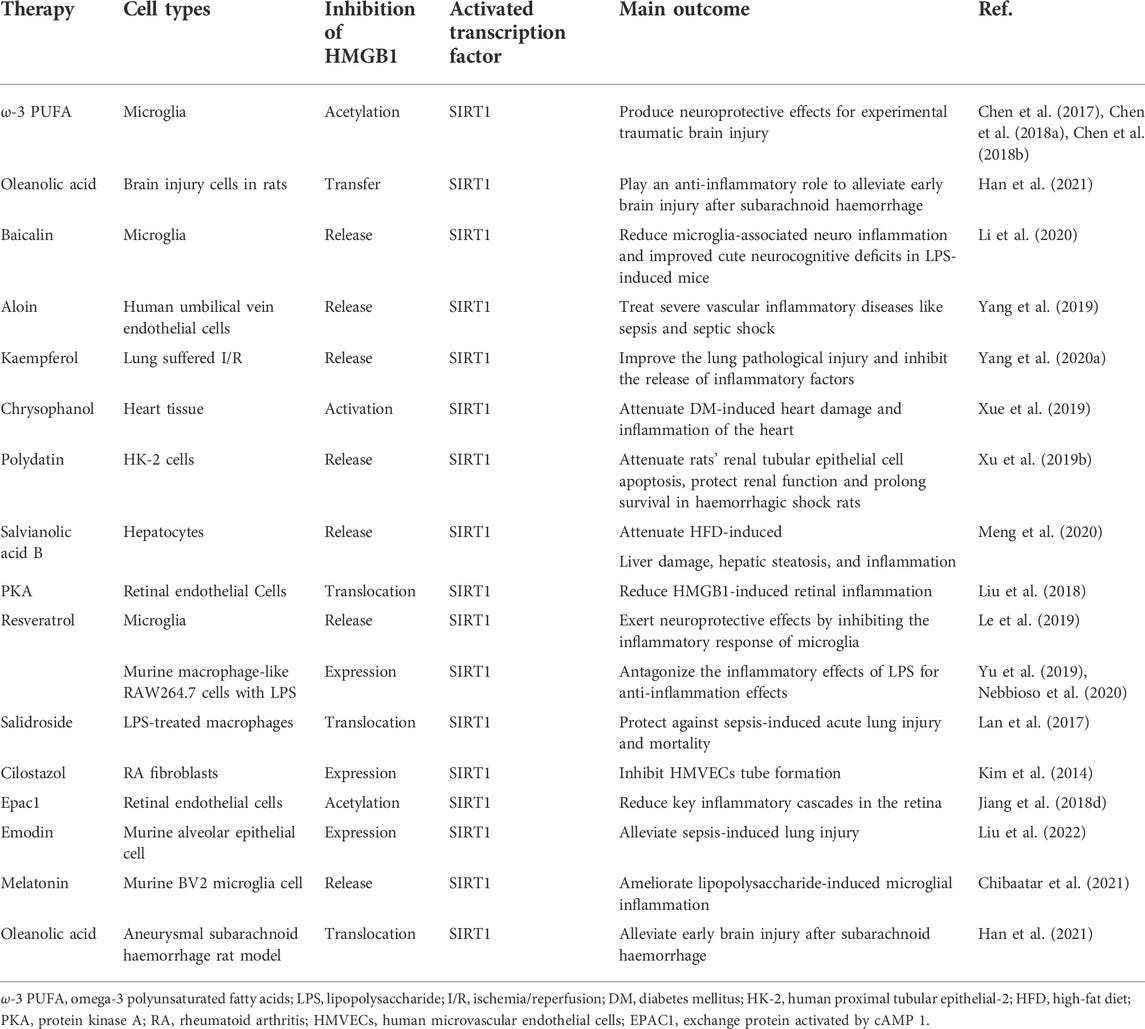
Many of the flavonoids and herbals I’ve reviewed before are likely to be beneficial, but these two stand out, not least in relation to the last two Substacks about icariin:
Quercetin is also indicated for treating ALS2 and for miR-34 promotion3 4 5. This would be a bad thing for neurons due to the promotion of apoptosis, but it doesn't just promote the self-destruction of cells (which is good when they are cancerous).
On balance, it is neuroprotective for several reasons. It has potent anti-inflammatory properties, promotes SIRT1, influences neurotransmitters such as via reduction of glutamate toxicity6, and helps to degrade amyloid plaques and neurofibrillary tangles (NFTs)7. In other words, it prevents the need for apoptosis in the first place, via upstream interactions.
Targeting many pathways, it also slows the progression of AD by modifying the effects of the P2X7 receptor, which Annelise discussed in relation to ALS progression:
Key takes from a newly published research paper: “Potential Benefits of Quercetin through P2X7 Modulation against Neuroinflammation in Alzheimer's Disease“ (2025) by Bianchini et al.8 (online before print, paywalled):
Alzheimer's disease is the leading cause of dementia worldwide. It belongs to the group of neurodegenerative ailments caused by the accumulation of extracellular β-amyloid plaques (Aβ) and intracellular neurofibrillary tau tangles, which damage brain tissue.
One of the mechanisms proposed involves protein neurotoxicity and neuroinflammation through the purinergic system pathway. Several endogenous nucleotides, such as Adenosine 5'-triphosphate (ATP), are involved in cell signaling.
High ATP levels can cause P2X7 receptor hyper-stimulation, resulting in an exacerbated inflammatory process and in apoptosis of cells.
From this perspective, searching for new therapies becomes important to assist in the patient's treatment and quality of life. As a flavonoid with several properties, including anti-inflammatory activity, Quercetin may be an alternative to alleviate the damage and symptoms caused by Alzheimer's disease. Therefore, this review aims to examine the potential of Quercetin through P2X7 modulation against neuroinflammation in Alzheimer's disease, as it affects the P2X7 receptor by direct and indirect interactions, resulting in decreased inflammation levels.
Therefore, we believe that Quercetin may have significant power in modulating the P2X7 receptor, demonstrating that the purinergic system has the potential to modulate neuroinflammation and can add to the treatment, reduce disease progression, and result in better prognoses.
Furthermore, technological alternatives such as Quercetin micronization might improve its delivery to target tissues.
Experiments using rats demonstrate that icariin should also be beneficial, by reducing inflammation and nerve damage induced by HMGB1.
Key takes from another recent paper by Chinese scientists Wenhui et al.: “Icariin attenuates vascular endothelial dysfunction by inhibiting inflammation through GPER/Sirt1/HMGB1 signaling pathway in type 1 diabetic rats“ (2024)9:
Icariin, a flavonoid glycoside, is extracted from Epimedium. This study aimed to investigate the vascular protective effects of icariin in type 1 diabetic rats by inhibiting high-mobility group box 1 (HMGB1)-related inflammation and exploring its potential mechanisms.
The impact of icariin on vascular dysfunction was assessed in streptozotocin (STZ)-induced diabetic rats through vascular reactivity studies. Western blotting and immunofluorescence assays were performed to measure the expressions of target proteins. The release of HMGB1 and pro-inflammation cytokines were measured by enzyme-linked immunosorbent assay (ELISA).
The results revealed that icariin administration enhanced acetylcholine-induced vasodilation in the aortas of diabetic rats. It also notably reduced the release of pro-inflammatory cytokines, including interleukin-8 (IL-8), IL-6, IL-1β, and tumor necrosis factor-alpha (TNF-α) in diabetic rats and high glucose (HG)-induced human umbilical vein endothelial cells (HUVECs).
The results also unveiled that the pro-inflammatory cytokines in the culture medium of HUVECs could be increased by rHMGB1.
The increased release of HMGB1 and upregulated expressions of HMGB1-related inflammatory factors, including advanced glycation end products (RAGE), Toll-like receptor 4 (TLR4), and phosphorylated p65 (p-p65) in diabetic rats and HG-induced HUVECs, were remarkably suppressed by icariin.
Notably, HMGB1 translocation from the nucleus to the cytoplasm in HUVECs under HG was inhibited by icariin. Meanwhile, icariin could activate G protein-coupled estrogen receptor (GPER) and sirt1.
These findings suggest that icariin activates GPER and increases the expression of Sirt1, which in turn reduces HMGB1 translocation and release, thereby improving vascular endothelial function in type 1 diabetic rats by inhibiting inflammation.
G1 is a G protein-coupled estrogen receptor (GPER) agonist. The authors discussion focused on icariin as a diabetes treatment. I will return to the link between miR-34-a and diabetes in a future Substack.
Our previous research has confirmed icariin’ s efficacy in attenuating vascular endothelial dysfunction in diabetes [23] .
It works, they just didn’t know why:
While it is established that icariin can improve vascular endothelial function by curbing inflammation, a comprehensive investigation into the mechanisms underlying icariin’s protective effects on vascular endothelial function by inhibiting inflammation in diabetes remains necessary.
A prior study revealed that icariin mitigated neuroinflammation in the hippocampus by inhibiting HMGB1 [24] . However, the impact of icariin on HMGB1-induced inflammation in vascular endothelium has yet to be established. Therefore, this study aims to elucidate whether icariin can improve vascular endothelial function in type 1 diabetes by inhibiting HMGB1-induced inflammation.

I’m curious about ref [24]: “Icariin and icaritin ameliorated hippocampus neuroinflammation via inhibiting HMGB1-related pro-inflammatory signals in lipopolysaccharide-induced inflammation model in C57BL/6 J mice” (2019) by Liu et al10.
Let’s see what they found:
In this study, we used LPS to induce an acute inflammatory response, and to measure the anti-neuroinflammation effect of icariin (ICA) and icaritin (ICT).
LPS: lipopolysaccharide, also known as “endotoxin”, are highly immunogenic outer membrane components from gram-negative bacteria:
We found that LPS could increase the expression of HMGB1 in serum and hippocampus, along with a high expression of HMGB1 in the cytoplasm and a high expression of RAGE, which could be rescued by ICA and ICT, and ethyl pyruvate (EP) pretreatment showed similar effects here.
We speculated that the translocation of HMGB1 from the nucleus to the cytoplasm played an important role in neuroinflammatory process, and HMGB1-RAGE signal was involved in this process.
Prevention is better than cure:
Furthermore, we found that ICA and ICT treatment activated TLR4-XBP1s related NF-κB signal, which we thought was relevant with the neuroprotective effect of ICA and ICT.
EP: ethyl pyruvate, has anti-inflammatory properties, inhibits TNFα, IL-1β, and HMGB1, and scavenges reactive oxygen species (ROS). Its effects were different from those of icariin and icaritin:
However, EP pretreatment suppressed TLR4-XBP1s- endoplasmic reticulum stress related NF-κB signal to anti-inflammatory response, which was almost absolutely opposite with ICA and ICT treatment.
We speculated that it might be caused by the duration of inflammation.
We supposed that ICA and ICT could ameliorate neuroinflammation in hippocampus via suppressing HMGB1-RAGE signaling and might show a neuroprotective effect via activating TLR4-XBP1s related NF-κB signal at the same time, making it possible to act as an anti-neuroinflammatory drugs.
As shown in Fig. 2A, we can find that the expression of HMGB1, TNFα and IL-10 in LPS group showed a higher expression compared to control, while after giving ICA and ICT for 4 weeks, the higher expression of HMGB1, TNFα and IL-10 in serum induced by LPS were significantly reduced (p < 0.05).
Next, we used EP which was reported as an anti-inflammatory and neuroprotective agent with the ability to inhibit the release of HMGB1 [[36], [37], [38]], to verify the mechanism of ICA and ICT's anti-inflammatory and neuroprotective effects. As shown in Fig. 2B, compared to LPS group, EP + LPS group showed a lower expression of HMGB1 and TNFα, and had no influence on IL-10 expression in serum.
A Is the icariin group.
B is the ethyl pyruvate group.
Lower is better in terms of pro-inflammatory cytokines, and icariin clearly wins this round:
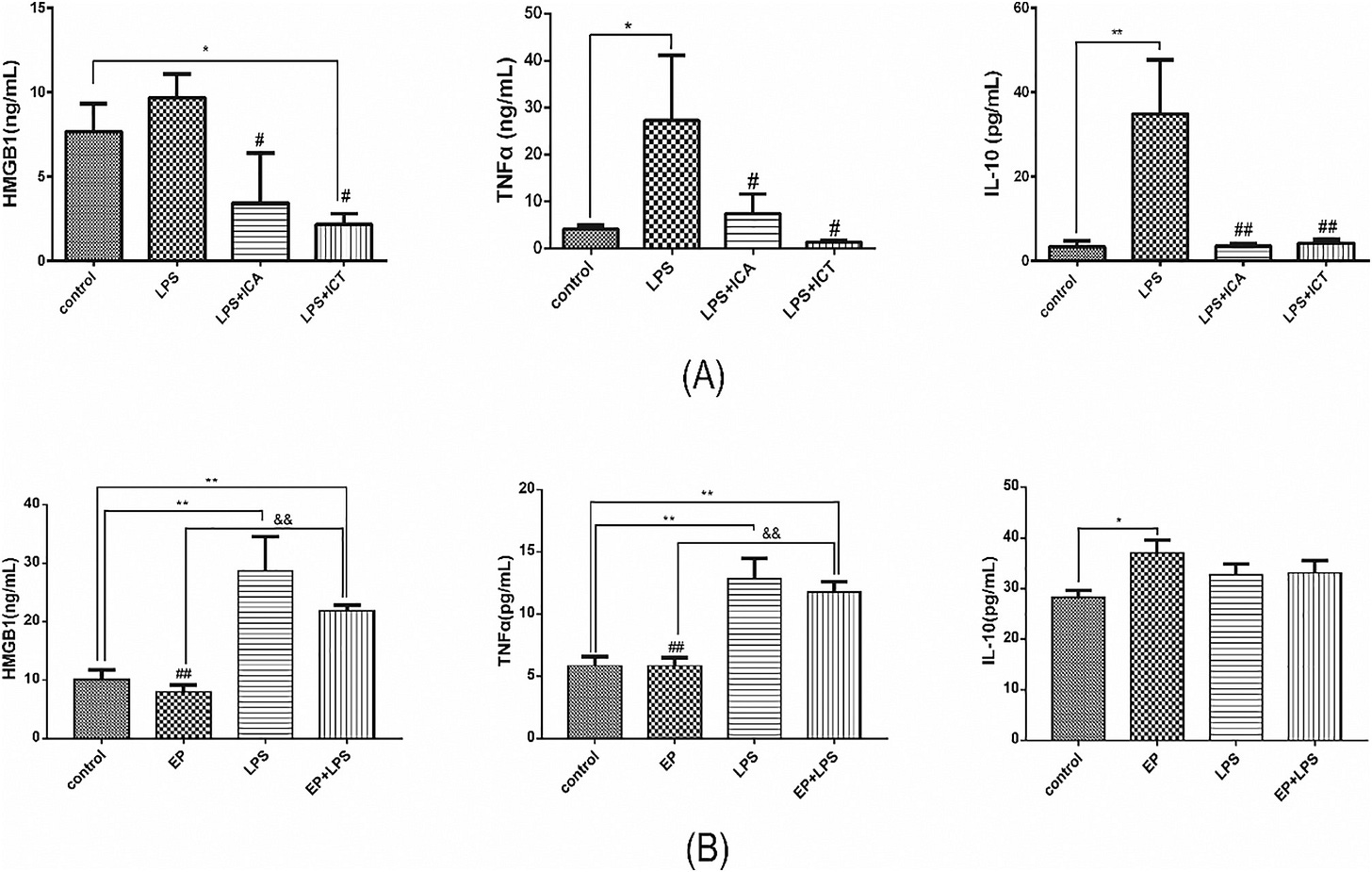
I will park this here for now, as there is plenty enough biochem to digest for one Substack.
3.0 Parting shots
I added this section to feature articles that wouldn’t justify their own dedicated Substack, but should be shared widely.
3.1 Comedy Central
Run, don’t walk, as fast as possible in the opposite direction.
Clueless Wes is baaaaack, and he wants you to sign up for clinical trials.
If you don’t know already, he is the useful idiot otherwise known as “Secretary of State for Health and Social Care”, and things just aren’t happening fast enough for Wes.
NHS trials helped beat Covid, millions can do the same against cancer and dementia
Story by Wes Streeting
The first clinical trial is believed to have been carried out in 1747, when a Scottish doctor treated patients on a ship with scurvy using a range of remedies. Those told to eat citrus fruits recovered – proving that Vitamin C could cure the disease.
From those simple observations to the mass, complex and modern clinical studies of today, there are now hundreds of thousands of patients every year in the UK taking part in trials to help discover new life-changing treatments so they can be used to transform care on the NHS frontline.
But, in recent years, companies around the world have slowed their investment in the UK. It takes around 150 days longer to set up a clinical trial here than it does in Spain.
This sluggish progress over the past decade matches the sluggish growth of our economy over the same period.
Just as this Government is acting to remove the hurdles in our planning system and housing and energy development, we will make it simpler to discover new medical treatments in this country too.
Soon, we will launch our 10 Year Health Plan. It will turbocharge clinical research and deliver the most ambitious reduction in trial set-up times in British history, as we seek to rebuild our country’s global status as the epicentre of research.
As the Prime Minister set out in April, this Government and the Wellcome Trust will invest up to £600m to create a new health data research service and by next year, we are aiming to slash unnecessary burdens on those running trials and cut the time taken to set up at trial by 100 days.
We will make life sciences a business-as-usual part of what hospitals do, not a “nice-to-have” in a small minority.
A thriving life sciences industry in Britain will boost growth, generate income for the NHS to reinvest in patient care, and uncover the cutting-edge treatments of the future, helping deliver our plan for change. I see this as mission critical.
That’s why we will introduce public reporting regarding progress on clinical trials for NHS trusts and healthcare providers, so that I, investors, and patients know where we should be investing our time and money.
Wait for the punchline:
Under the plan, millions of people will be able to access the latest clinical trials more easily via the NHS app, so finding relevant trials that people will be eligible for will be far more straightforward.
Over time, the service will evolve to offer tailored notifications to your phone based on your health data, matching you with studies that could make a real difference to your condition and save others.
This isn’t just a technical upgrade – it’s about democratising access to cutting-edge treatments.
#Barf warning#
And I think our Wes needs to join a trial investigating delusions:
During the Covid pandemic, more than half a million of us volunteered to help develop the vaccine that gave us back our lives, liberty, and livelihoods.
It demonstrated the best of the British spirit. And if we did it for Covid, why wouldn’t Brits want to come forward to cure cancer or defeat dementia?
If we can marry our country’s brightest scientific and research minds, with the single payer health service and all the untapped potential it offers, then Britain could be a powerhouse for life sciences and the birthplace of 21st century medicine.
3.2 All kids to get DNA tests
Can you opt out of this? The idea is to further enroll every child in the pharma cult, with its latest quack mRNA products.
Picture Wes’s NHS app lighting up with scary warnings about you and your child’s genes, and how you need to act. Or else.
This ignores the fact that there is a wide gap between genetics and disease, and whether you can safely treat it with experimental gene therapies. In reality, you may need to do nothing more than adjust your diet and lifestyle to compensate.
Clueless Wes does not consider epigenetics. Or that one of the most significant epigenetic modifiers of a child’s development is through allopathic drugs, gene therapies, and vaccines:
"Extensive research has highlighted the role of infection-induced epigenetic events in the development of cancer. More recently, attention has focused on the ability of non-carcinogenic infections, as well as vaccines, to modify the human epigenome and modulate the immune response.
This review explores this rapidly evolving area of investigation and outlines the many and varied ways in which vaccination and natural infection can influence the human epigenome from modulation of the innate and adaptive immune response, to biological ageing and modification of disease risk.
The implications of these epigenetic changes on immune regulation and their potential application to the diagnosis and treatment of chronic infection and vaccine development are also discussed."
From: “The emerging role of epigenetics in the immune response to vaccination and infection: a systematic review“ (2020)
https://pmc.ncbi.nlm.nih.gov/articles/PMC7574386/All babies in England to get DNA test to assess risk of diseases within 10 years
Every baby in England is to have a DNA screening to avoid fatal diseases and receive personalised healthcare as part of the government’s £650m investment in DNA technology, it has been reported.
Within a decade, every newborn will undergo whole genome sequencing, which assesses the risk of hundreds of diseases and is expected to form part of the government’s 10-year plan for the health service.
Wes Streeting, the health secretary, told the Telegraph the advances in genomics would allow people to “leapfrog” killer illnesses and receive “personalised” health care.
He said: “The revolution in medical science means that we can transform the NHS over the coming decade, from a service which diagnoses and treats ill health to one that predicts and prevents it.
“Genomics presents us with the opportunity to leapfrog disease, so we’re in front of it rather than reacting to it.”
Streeting added: “With the power of this new technology, patients will be able to receive personalised healthcare to prevent ill health before symptoms begin, reducing the pressure on NHS services and helping people live longer, healthier lives.”
3.3 A National Health State
More money, yet declining health, and the golden rule is to never mention The Thing™.
UK Turning Into ‘National Health State,’ Says Think Tank
Chancellor Rachel Reeves announced that £6 billion of NHS funds will be used to deliver up to 4 million additional NHS tests, scans, and procedures.
The UK is turning into a “National Health State,” the Resolution Foundation has said, after Chancellor Rachel Reeves announced a £29 billion annual increase in NHS funding.
The think tank’s analysis of Reeves’s Spending Review estimates that by the end of financial year 2028–29, the health service will account for half (49 percent) of all day-to-day public services spending, up from 34 percent in 2009–10.
On Wednesday, the chancellor announced a record £29 billion funding injection, which the Treasury said will deliver on the government’s promise to cut waiting lists, improve patient care, and modernise services.
Resolution Foundation Chief Executive Ruth Curtice said in a statement, “Health accounted for 90 per cent of the extra public service spending, continuing a trend that is seeing the British state morph into a National Health State, with half of public service spending set to be on health by the end of the decade.”
The Institute for Fiscal Studies (IFS) noted in its initial response to the Spending Review that the funding increase for the NHS was substantial, but questioned whether it will be enough to get the health service back to meeting its 18-week target for hospital waiting times within this Parliament, something which the think tank said was “enormously ambitious.”
More: https://www.theepochtimes.com/world/uk-turning-into-national-health-state-says-think-tank-5871817
3.4 999 call handler burnout
They do a brilliant job, but being jabbed like a pincushion due to the vax mandates doesn’t help.
And nobody dares to ask publicly, “What’s changed?”:
999 NHS call handlers suffering mass burnout with 500,000 days lost to sickness
NHS 999 staff are quitting and suffering burnout caused by the “relentless pressure” of calls, according to new research.
Figures obtained by Unison from ambulance services showed high turnover rates among call handlers, which staff say are often over a lack of support and the non-stop, often distressing, calls that force many to take sick leave.
A report launched at the union’s annual conference in Liverpool today revealed the toll taken on the workforce, with more than a quarter of NHS ambulance control room staff quitting their jobs over the past three years.
According to the research, more than half a million days were lost to call handler illness in the three years from April 2021.
The figure for 2023/24 alone was 166,940 - the equivalent of more than a month of sick leave for each 999 call handler.
The union says high staff turnover and increased sickness absences are having a negative impact on patients.
It often means people are having to wait longer for 999 staff to answer calls or for their emergency to be properly assessed and dealt with.
Unison general secretary Christina McAnea said: “These findings paint a bleak picture of the conditions faced by 999 control room staff.
“TV programmes about ambulance services don’t show things as they really are. Call handlers are under immense pressure, making split-second decisions that directly affect lives.
“They handle relentless calls, often from people in distress, while dealing with complex emergencies and with limited resources.
3.5 Reverse vaccines
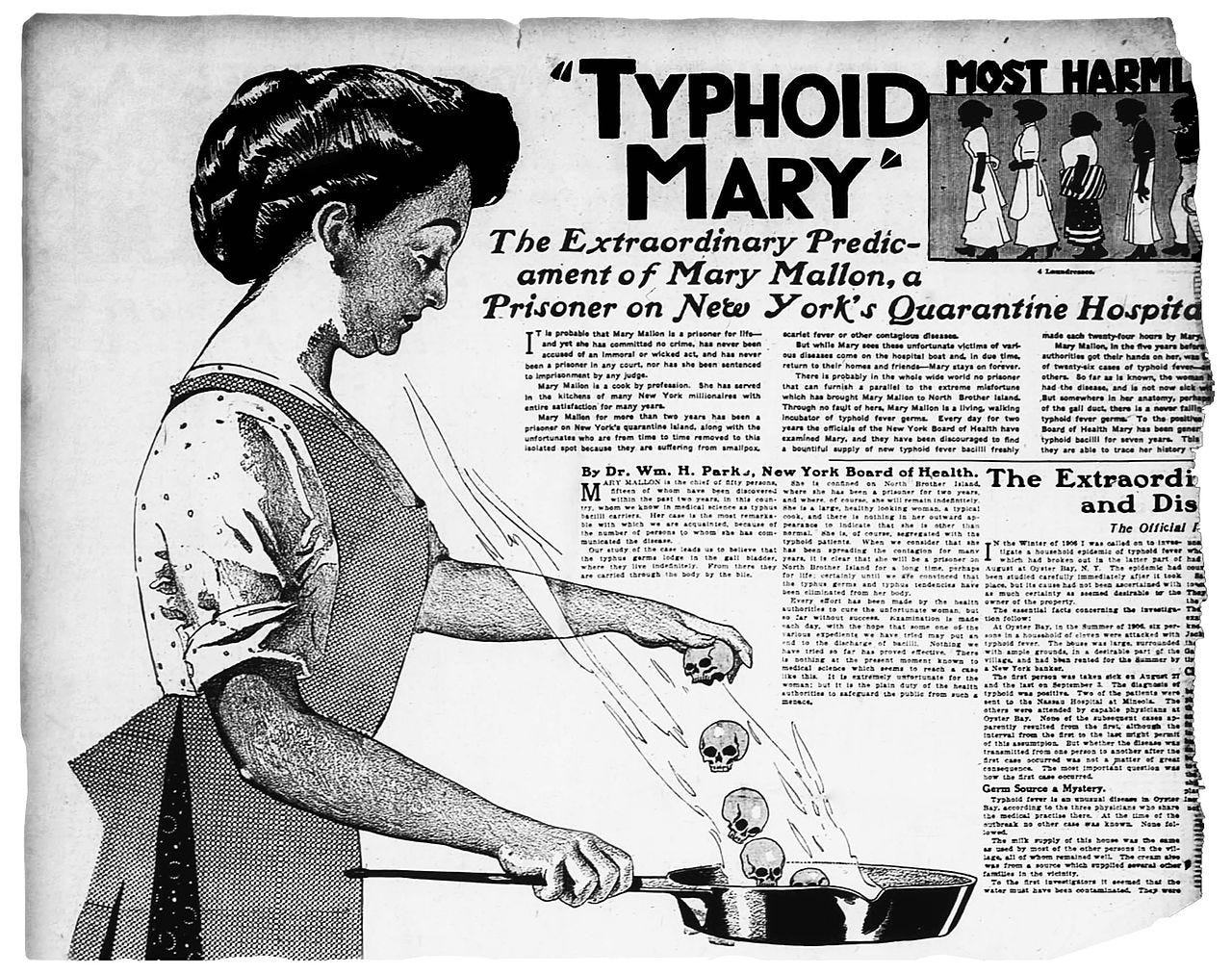
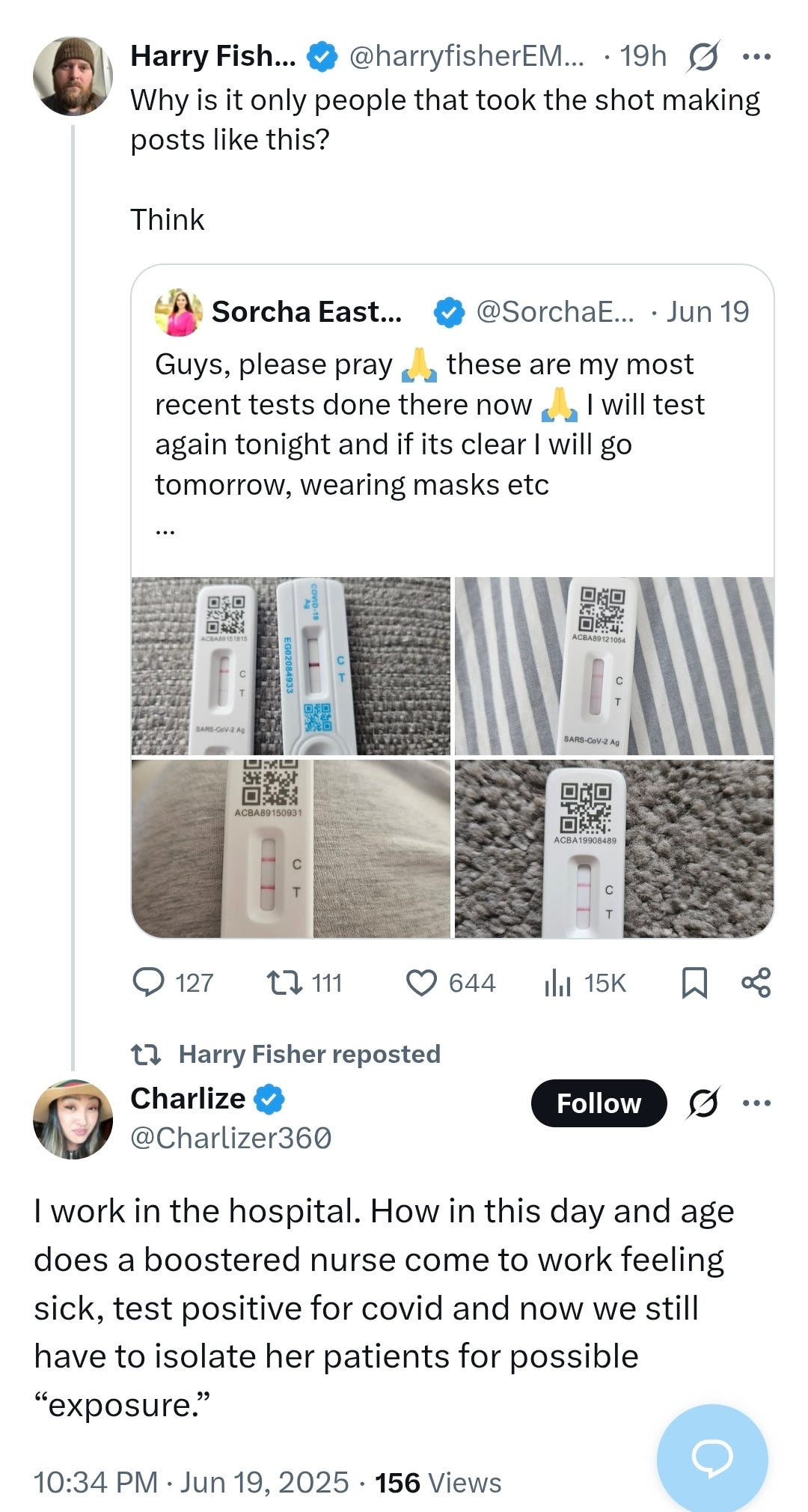
3.6 Fired!!
This can’t be right. The good doc played by the rules and — correct me if I’m wrong — never strayed from the narrative, and this is how he gets rewarded.
He was especially busy in 2021.
This didn’t age well, as almost all these so-called “conspiracy theories” were later confirmed as fact:
Why are some people vaccine hesitant?
What makes some people less likely to get vaccinated?
14 June 2021
Interview with
Mohammed Razai, St George's Hospital, London
Part of the show Vaccine Hesitancy
With us is Mohammad Razai, a researcher in primary care at St George’s Hospital in London who has been looking into why some peole are vaccinated hesitant, as he told Chris Smith...
Mohammad - The most common reasons people give, and surveys and studies have shown, is concerns about long-term effects, side effects, and unknown future effects on health. Concerns about the speed of development of COVID-19 vaccines, and concerns about vaccines incompatibility with religious beliefs. There are also concerns about practical issues, such as inconvenient vaccine delivery, time and location. Particularly amongst women they're apprehensions surrounding fertility, pregnancy, and breastfeeding. And of course we have heard quite a lot around the spread of misinformation and some people do believe in conspiracy theories, such as COVID-19 not being real or that vaccines modify DNA. Also in some ethnic minorities, such as some black ethnicities, we see a lack of trust in the pharmaceutical industry, in government, public health bodies, and just generally a low confidence in vaccines and their importance and safety and efficacy. So these are some of the concerns we are seeing consistently in published surveys and research.
Chris - Most of these though, Mohammed, sound like a communication deficit. As in that people are saying those things, are making, to them, quite rational decisions and quite sensible decisions based on a lack of information or a lack of the right sort of information or access to that information.
More: https://www.thenakedscientists.com/articles/interviews/why-are-some-people-vaccine-hesitant
Then, more doom and gloom warnings.
Don’t even think about skipping those boosters, you granny killers:
Expert says Covid could come 'roaring back' amid vaccine warning
Dr Chris Smith said it would be 'very easy to unstitch all of the good work we’ve done so far'
21 Aug 2021
The UK must not take its “eye off the ball” with Covid-19 vaccinations, an expert has said as he warned the virus could come “roaring back”.
Dr Chris Smith, consultant virologist and lecturer at Cambridge University, said a decision on booster jabs should not be “rash, (or) rushed”, and that the Government is considering a more “strategic” approach.
It comes as Health Secretary Sajid Javid said he is “confident” a booster vaccine campaign can start next month despite reports that experts want more time to consider whether they are needed.
Speaking on BBC Breakfast, Dr Smith said: “We all agree that (the pandemic) is not over until it is over in every corner of the world, because otherwise it will just come roaring back.
“Don’t forget we think that this started with a handful of cases in one city, in one corner of one country… and it then eclipsed the entire world.
“But one must not take one’s eye off the ball here because it would be very easy to unstitch all of the good work we’ve done so far if it turns out with time we do lose immunity because the vaccines wane in their effectiveness.
More: https://www.walesonline.co.uk/news/uk-news/expert-says-covid-could-come-21368285
This week:
Cambridge faces backlash for axing top Covid expert
The University of Cambridge is facing a backlash over its decision to lay off a leading virologist who helped guide Britain through the Covid pandemic.
Dr Chris Smith, the host of The Naked Scientists podcast, was told earlier this month that he was being made redundant.
The university has said the closure of the post was necessary both to save costs and because it did not align with Cambridge’s outreach strategy.
However, Dr Smith said The Naked Scientists podcast, which he launched 24 years ago and has surpassed 150 million downloads, is a highly effective form of outreach.
The programme aims to increase public understanding of science and frequently highlights the work of Cambridge researchers.
Listeners from as far afield as Australia have begun petitioning the university after Dr Smith shared news of the proposed redundancy.
3.7 Turbocancer (hyperprogressive disease)?
Forget developing over decades, cancer has now become a “short illness”.
Deacon blue keyboard player James Prime dies after short battle with cancer
Deacon Blue keyboardist James “Jim” Prime has died aged 64 after a short battle with cancer.
The Scottish pop-rock band announced the news shortly after Prime, from Kilmarnock, died on Thursday morning.
They wrote on social media: “Dear friends, We announce with great sadness that our brother James Prime passed away this morning after a short struggle with cancer.
3.8 Cancer trends latest
This isn’t leveling out. It’s accelerating as the pull-forward effect fades:
Week 11 2025 Cancer Mortality Update
Cancer mortality is officially exhibiting a non-linear rise trajectory. I was waiting to make this observation, first out of conservancy, but also from a hope that it would not even manifest. However, cancer is now accelerating mildly.
3.9 Pseudoscientific dogma
3.10 Brilinta — not so brilliant
Not effective. Now that could apply to most of the prescription drug snake oil tablets they push on you.
Top medics issue warning over heart drug - AstraZeneca accused of 'misreporting' data
Millions of patients at high risk of a fatal heart attack could be taking a drug that may not even be effective, top doctors have warned.
Anti-clotting pill ticagrelor was approved for use on the NHS in 2011 after trials claimed it could prevent one in five deaths after a heart attack.
The twice-daily pill, sold as Brilinta, is given to people with acute coronary syndrome —a sudden reduction of blood to the heart—reducing the risk of deadly clots and strokes.
Since then, studies have questioned if the AstraZeneca drug is as good as its rivals, such as clopidogrel, with some even suggesting it may even increase the risk of bleeding.
Now, experts have discovered 'evidence of serious misreporting' in two clinical trials, pivotal to getting the drug approved in the UK and US, 'raising doubts over its approval'.
The BMJ investigation claimed the 'primary endpoint' results—the key measure to determine whether a treatment is effective—for both trials were inaccurately reported in leading cardiology journal Circulation.
It also said around a quarter of the readings from machines used in the trials were not included in the data sets, the US medicine's regulator, the Food and Drug Administration (FDA) used to approve the drug.
Dr Victor Serebruany, an expert in cardiovascular pharmacology at Johns Hopkins University in Maryland, who has been critical of the drug for over a decade said: 'It's been obvious for years that there is something wrong with the data.
3.11 Abortion shot latest
I’m sure this is just a coincidence, and it’s all down to poor management.
Another masterpiece by our Wes.
Government launches national investigation into NHS maternity services
The Government has launched a national investigation into “systemic” failures in NHS maternity services in England.
Health Secretary Wes Streeting said that “up and down” the country “maternity units are failing, hospitals are failing, trusts are failing, regulators are failing” and there was “too much passing the buck”.
Mr Streeting, who has been meeting families who have lost babies to poor maternity care, told the Royal College of Obstetricians and Gynaecologists (RCOG) conference in London: “Over the last year, I’ve been wrestling with how we tackle problems in maternity and neonatal units, and I’ve come to the realisation that while there is action we can take now, we have to acknowledge that this has become systemic.
“It’s not just a few bad units. Up and down the country, maternity units are failing, hospitals are failing, trusts are failing, regulators are failing.
“There’s too much obfuscation, too much passing the buck and giving lip service.”
Mr Streeting apologised on behalf of the NHS, having met families in Nottingham and around the country whose children have died or been injured.
Senior midwife Donna Ockenden is currently examining how hundreds of babies died or were injured in the care of Nottingham University Hospitals Trust.
… “But, despite improvements on some metrics, inequalities in maternal and neo-natal outcomes have become more visible, not less. The rate of late maternal deaths has been consistently rising.
“Babies of black ethnicity are twice as likely to be stillborn than babies of white ethnicity, and black women are still two to three times more likely to die during pregnancy or shortly after birth than white women.
“Tragically, that gap is closing slightly, but partly because more white women are dying in childbirth.”
BREAKING:
Analysis of over 220K pregnancies in Israel during 2016- 2022 found that mRNA COVID-19 vaccination during gestational weeks 8-13 was associated with a higher-than-expected number of eventual fetal losses (miscarriages, abortions & stillbirths)!
Pregnant women vaccinated with dose 1 during weeks 8-13 had nearly 3.9 (95% CI: [2.55-5.14]) additional fetal losses above expected per 100 pregnancies. Most of the excess fetal losses occurred after gestational week 20 and nearly half occurred after gestational week 25.
In contrast, pregnant women vaccinated for influenza during weeks 8-27 exhibited a consistently lower-than-expected observed number of fetal losses, likely the result of healthy vaccinee bias. Women vaccinated for COVID-19 or influenza prior to pregnancy exhibited according-to-expected or lower-than-expected numbers of fetal losses.
The study used innovative observed-to-expected methodology, where data from prior years were leveraged to determine the expected number of fetal losses based on the individual characteristics of the pregnant women who vaccinated and their week of vaccination.
https://x.com/RetsefL/status/1936158956482666809
Source paper: https://www.medrxiv.org/content/10.1101/2025.06.18.25329352v1
3.12 NHS-GSK shingles vax and autoimmune disorders
Have you had yours?
“If you get any side effects, report them to your nurse or doctor”If one of these is lupus, then good luck.
At least with cancer, some types are curable if treated early enough.
Prognosis and Life Expectancy
Lupus is a chronic (long-term) disease, and right now there’s no cure. If you’re living with lupus, that means treatment to manage your symptoms will probably be an important part of your life moving forward.
https://www.lupus.org/resources/prognosis-and-life-expectancyWe report the first case of lupus induced by the Shingrix varicella-zoster vaccine. "The varicella-zoster vaccine will be administered to a large percentage of the population, which could lead to an increase in adverse effects that have not yet been described."
https://x.com/mRNAdeaths/status/1936187477573718108
Source paper: https://link.springer.com/article/10.1007/s10067-025-07529-2
What the pharma shills in the NHS don’t tell you is that the best cure for shingles is… shingles. The symptoms aren’t brilliant, but neither are those of vax-induced autoimmune disorders
You may be at risk of a breakthrough infection if you are immunocompromised, but that applies equally to the vaccine.
How often does shingles recur?
Most peopleTrusted Source get shingles only once.
But about 1.2–9.6% of people with shingles may develop another shingles infection, or recurrence, according to a 2024 review of research.
Recurrence is more likely in people who have a weakened immune system. The same review notes that up to 18% of people with weakened immune systems may get shingles more than once.
Research from 2021 notes that the average time between the first shingles infection and the recurrent infection was 2 years for adults ages 45-54 and 3 years for adults 55 and older.
https://www.healthline.com/health/shingles-recurrence#statisticsAntisynthetase Syndrome Post Shingrix and Pneumovax Vaccinations, Possible Correlation (2022)
Abstract
This is a case report of a patient who developed acute progressive shortness of breath that started two days following the administration of Shingrix and Pneumovax vaccinations. Eight days after the onset of his symptoms he was diagnosed with acute interstitial pneumonitis based on CT scan of the chest which later appeared to be consistent with the diagnosis of antisynthetase syndrome in light of findings consistent with mechanic's hands on examination, elevated Anti-Jo-1 antibody titers and aldolase on laboratory studies.
https://pmc.ncbi.nlm.nih.gov/articles/PMC9203250/Recurrence of a Rare Subtype of Guillain-Barré Syndrome Following a Second Dose of the Shingles Vaccine (2022)
Abstract
Guillain-Barré Syndrome (GBS) is an acute, immune-mediated polyneuropathy. The exact cause of GBS remains unknown, however, it commonly develops post-infection. Since the 1950s, various vaccines have been attributed to causing the syndrome, yet no definitive relationship has ever been determined. In 2021, the Food and Drug Administration (FDA) placed a black-box warning for Shingrix, a non-live recombinant vaccine against the varicella-zoster virus, regarding a possible risk of acquiring GBS post-vaccination in adults aged 65 and older. We report the recurrence of a rare subtype of GBS in a 61-year-old patient following the second dose of Shingrix. This case highlights the difficulty of diagnosing and treating recurrent GBS. It also raises awareness that Shingrix may be related to the development of GBS in younger patients. This case also emphasizes the importance of differentiating GBS from other polyneuropathies.
https://pmc.ncbi.nlm.nih.gov/articles/PMC9696857/Just in, from a paper presented at June’s Communicable Diseases and Immunisation Conference in Adelaide:
"The new data shows a 16-times increased risk of developing shingles in the three weeks following the first dose of Shingrix, compared to the period before vaccination."The Sydney Morning Herald reports (paywalled), and the interviewees did their best to spin this disastrous flop as a nothingburger.
When it’s because of the vax, shingles is “mild” and nothing to worry about.
Shingles vaccine may increase mild shingles risk for a few weeks, new data shows
June 14, 2025 — 7.45pm
Preliminary new evidence suggests the new shingles vaccine temporarily increases the risk of developing a mild case of shingles in the weeks following the first jab.
The Victorian scientists who spotted the perplexing new signal say their data still shows strong protection from the Shingrix jab: an 83 per cent reduction in new shingles cases, even including the small temporary increase.
“The vaccine is safe,” said Dr Aishwarya Shetty, an epidemiologist at the Murdoch Children’s Research Institute and Victoria’s Vaccine Safety Service, who led the investigation.
“We found there was a brief period – the 21 days post vaccination – when we saw there was an increase in people presenting with shingles. But in all periods post this risk window, we saw this risk was not present.”
The researchers said people should continue to get the vaccine but should be on the lookout for short-term side effects after the first dose.
Other countries rolling out Shingrix have not seen a similar safety signal – more than 150 million doses have been given across more than 50 countries – and it was not spotted in clinical trials of the vaccine.
In a statement, the vaccine’s manufacturer GSK said “based on the totality of data available” there was “insufficient evidence of an increased risk of shingles shortly after vaccination with Shingrix”.
The company said many of the cases might be rashes that were misdiagnosed by GPs as shingles; rashes are a noted side effect of the vaccine.
But the researchers – which includes the head of signal reporting at Victoria’s Vaccine Safety Service – are confident about their data.
Australia’s drug regulator, the Therapeutic Drugs Administration, confirmed it too had “found evidence of a possible temporal association” between the vaccine and shingles and was investigating.
The new data shows a 16-times increased risk of developing shingles in the three weeks following the first dose of Shingrix, compared to the period before vaccination.
The risk only effects people aged over 65. After three weeks, the vaccine’s protection kicks in and the risk of developing shingles drops dramatically.
The researchers do not yet have absolute risk figures. But other studies suggest that for every 1000 unvaccinated people aged between 60 and 69, there will be about 150 new cases a year. Shingrix cuts cases of shingles by 97.4 per cent in that age group, according to a large clinical trial.
If I were being cynical, I could hypothesise that shingles after vaccine-induced immunosuppression leads to long-term immunity that was being mis-categorised as being due to the vaccine, not the infection it caused.
This would be particularly so if they used the Covid vax trick of classifying you as “unvaccinated” for the first few weeks after the jab.
3.13 Real pandemics don’t need PsyOps and gimmicks
We knew this already, but now we have confirmation via FOI documents.
UK Gov't Secretly Used BBC & ITV Soaps for 'Underhanded' Vaccine 'Propaganda' to Covertly Shape Public Opinion, Coerce Compliance: FOI Documents
How much control does the State really have over our media?
Jun 20, 2025
New Freedom of Information (FOI) documents confirm what many long suspected: The UK government secretly used popular soap operas like EastEnders and Coronation Street to push vaccine propaganda during the pandemic, raising urgent questions about how much influence the state holds over British media, and how far officials are willing to go to manipulate public thought, opinion and behavior under the guise of public health.
The findings echo May 2021 revelations that scientists on the UK government’s behavioral advisory committee admitted they used fear-based “totalitarian” tactics to control public behavior during COVID-19, describing the approach as “unethical,” “dystopian,” and a form of “mind control.”
They also mirror an October 2024 U.S. House investigation that found the CDC and Biden administration used a $900 million COVID campaign to “manipulate Americans” with “deeply flawed” messaging, “overpromising” vaccines “without evidence,” and funding Big Tech companies to “track and monitor Americans.”
What other views and choices are being shaped today by government-scripted entertainment?
Ministers Pushed BBC & ITV to Insert Vaccine Storylines
“Ministers met television bosses during the pandemic to persuade them to push pro-vaccine storylines in soaps such as EastEnders and Coronation Street, it has emerged,” The Telegraph reported last week.
More: https://jonfleetwood.substack.com/p/uk-govt-secretly-used-bbc-and-itv
An EastEnders clip of the ignorant “anti-vaxer” became a cult hit at the time. This was not only because it was so pathetic, but because the ignorant and ironically named “Karen” outsmarted the other two:
From: “EastEnders hit back at complaints over Covid vaccine storyline ‘We reflect real life!’” (Apr 4, 2021)
3.14 Genocidal psychopaths
Use of a bioweapon developed using gain-of-function research (GoFR) led to this Substack in the first place, and they haven’t stopped working on creating new pathogens.
Slightly off-topic, but just dropping these two in here:
How to Prepare for Civil Unrest?
April 1, 2025 22 Min read
Civil unrest – from peaceful protests to violent riots – has become a reality in many parts of the world, including the United States. Unrest can erupt with little warning due to political tensions, social grievances, economic stress, or other triggers. Being prepared is crucial for your safety and peace of mind. Preparation means knowing how to shelter in place securely when necessary, or evacuate quickly to a safer location if things escalate. It also means having supplies, plans, and the mental readiness to handle chaos. This comprehensive guide will walk you through everything you need to know about preparing for civil unrest, covering risk assessment, home fortification, emergency supplies, self-defense, evacuation planning, communication, legal considerations, mental preparedness, and long-term resilience. Use the following sections to ensure you and your family stay safe no matter what happens.
In this article
More: https://armormax.com/blog/how-to-prepare-for-civil-unrest/
Conscription enters the Overton Window of discourse:
Five key UK jobs likely to be exempt from conscription in event of WW3
Should the UK be drawn into a large-scale conflict, the government may be forced to conscript the population
By Jon Macpherson Chief Reporter, Alex Evans Deputy Audience Editor and Tom Kershaw Content Editor
12:53, 18 Jun 2025
The prospect of WW3 is indeed a daunting one, and with the ongoing tension between Iran and Israel, as well as Iran naming China and Russia as allies, fears are mounting that a global conflict could be looming.
In the event of such a war, certain jobs might be deemed too vital to national security for individuals to be drafted into combat – these professions may be exempt from conscription. While it's unclear how modern-day conscription would take shape, we can look to historical examples from WW2 for guidance. During this period, certain occupations were shielded from being drafted, including bakers, farmers, doctors, nurses, and engineers.
… Mike Martin, an Afghanistan veteran and the MP for Tunbridge Wells, told the Express: "There's a significant chance that it [war with Russia] might happen so we must be prepared.
"Obviously, if we get involved in a general war with Russia, we'll be conscripting the population - there's no question about that," the Liberal Democrat added. "Being prepared generates deterrence, which decreases the likelihood [of war]. The whole point about building the military up is it decreases the likelihood of this happening. I think that's an important caveat. I've fought in wars, I'm not a warmonger. But I recognise that you've got to [pursue] peace through strength."
More: https://www.chroniclelive.co.uk/news/uk-news/five-key-uk-jobs-likely-31882492
4.0 Concluding remarks
There is a lot to take in, and I will discuss miR-34-a research further in future Substacks — both the upstream mechanisms and the downstream effects. Credit must go to everyone for their work in this area. ALS is a terrible disease that always greatly reduces life expectancy. Anything that can help move us forward in understanding its mechanisms and potentially inhibiting them is of immense value.
ALS is a ship that, once it sets sail, follows a course that is exceedingly difficult to reverse, not least because of its complex and incomplete etiology.
5.0 Disclaimer
This site is strictly an information website reviewing research into potential therapeutic agents. It does not advertise anything, or provide medical advice, diagnosis, or treatment. This site does not promote any of these as potential treatments or offer any claims for efficacy. Its content is aimed at researchers, registered medical practitioners, nurses, or pharmacists. This content is not a substitute for professional medical advice, diagnosis, or treatment. Always seek the advice of your physician or other qualified health provider with any questions you may have regarding a medical condition. Never disregard professional medical advice or delay in seeking it because of something you have read on this website. Always consult a qualified health provider before introducing or stopping any medications as any possible drug interactions or effects will need to be considered.
Any extracts quoted in the previous article are for non-commercial research and educational purposes only and may be subject to copyright from their respective owners.
From “Imagine still watching TV or trusting doctors in 2025” (1m28s)
6.0 References
Zhou M, Liu B, Ye HM, et al. ROS-induced imbalance of the miR-34a-5p/SIRT1/p53 axis triggers chronic chondrocyte injury and inflammation. Heliyon. 2024;10(11):e31654. doi:10.1016/j.heliyon.2024.e31654
Lazo-Gomez, Rafael, and Ricardo Tapia. ‘Quercetin Prevents Spinal Motor Neuron Degeneration Induced by Chronic Excitotoxic Stimulus by a Sirtuin 1-Dependent Mechanism’. Translational Neurodegeneration 6 (21 November 2017): 31. https://doi.org/10.1186/s40035-017-0102-8.
Lou, Guohua, Yanning Liu, and Zhi Chen. ‘Quercetin Suppresses Human Liver Cancer Cell Growth through Upregulating miR-34a Expression Caused by Stabilizing P53: 415’. Hepatology 58 (October 2013): 408A. https://journals.lww.com/hep/citation/2013/10001/quercetin_suppresses_human_liver_cancer_cell.415.aspx.
Lou, Guohua, Yanning Liu, Shanshan Wu, Jihua Xue, Fan Yang, Haijing Fu, Min Zheng, and Zhi Chen. ‘The P53/miR-34a/SIRT1 Positive Feedback Loop in Quercetin-Induced Apoptosis’. Cellular Physiology and Biochemistry 35, no. 6 (7 April 2015): 2192–2202. https://doi.org/10.1159/000374024.
Mousavinejad, Seyyed Navid, Mohammad Ali Takhshid, Siamak Salami, Marjan Khorsand, Fatemeh Asgari, and Majid Sirati-Sabet. ‘The Effect of Quercetin on the Expression of miR-21 and miR-34a-5p on HeLa and Ca Ski Cell Lines’. Jundishapur Journal of Natural Pharmaceutical Products 19, no. 4 (21 October 2024). https://doi.org/10.5812/jjnpp-152682.
Riche, Kade, and Natalie R. Lenard. ‘Quercetin’s Effects on Glutamate Cytotoxicity’. Molecules (Basel, Switzerland) 27, no. 21 (7 November 2022): 7620. https://doi.org/10.3390/molecules27217620.
Khan, Haroon, Hammad Ullah, Michael Aschner, Wai San Cheang, and Esra Küpeli Akkol. ‘Neuroprotective Effects of Quercetin in Alzheimer’s Disease’. Biomolecules 10, no. 1 (30 December 2019): 59. https://doi.org/10.3390/biom10010059.
Bianchini, Matheus Chimelo, Francini Franscescon, Adinei Abadio Soares, Vinicius Ansolin, Kailane Paula Pretto, Marcelo Lemos Vieira da Cunha, and Débora Tavares de Resende E Silva. ‘Potential Benefits of Quercetin through P2X7 Modulation against Neuroinflammation in Alzheimer’s Disease’. Current Neuropharmacology, 11 April 2025. https://doi.org/10.2174/011570159X355614250130100132.
‘Icariin Attenuates Vascular Endothelial Dysfunction by Inhibiting Inflammation through GPER/Sirt1/HMGB1 Signaling Pathway in Type 1 Diabetic Rats’. Chinese Journal of Natural Medicines 22, no. 4 (1 April 2024): 293–306. https://doi.org/10.1016/S1875-5364(24)60618-7.
Liu, Lumei, Zhengxiao Zhao, Linwei Lu, Jiaqi Liu, Jing Sun, Xiao Wu, and Jingcheng Dong. ‘Icariin and Icaritin Ameliorated Hippocampus Neuroinflammation via Inhibiting HMGB1-Related pro-Inflammatory Signals in Lipopolysaccharide-Induced Inflammation Model in C57BL/6 J Mice’. International Immunopharmacology 68 (March 2019): 95–105. https://doi.org/10.1016/j.intimp.2018.12.055.








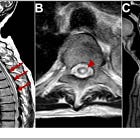



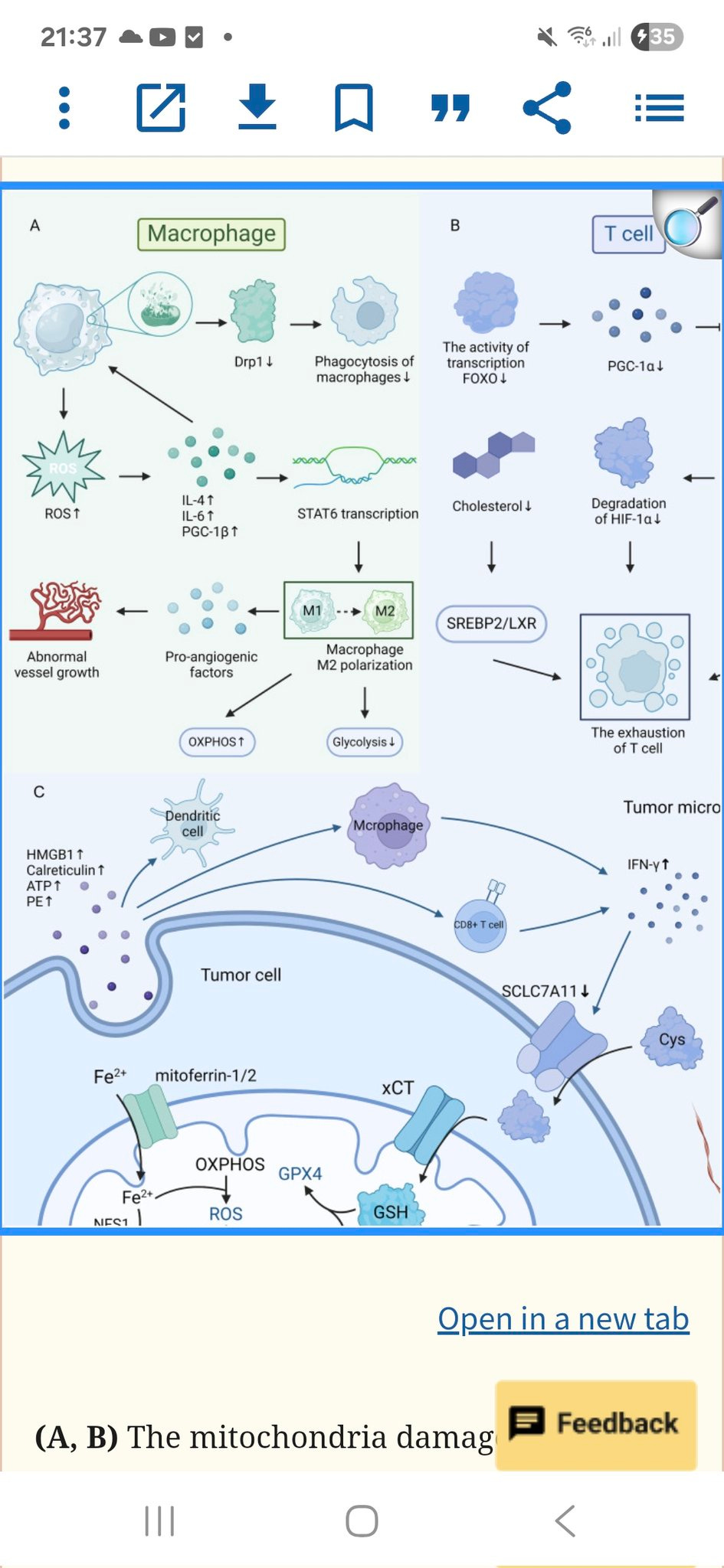
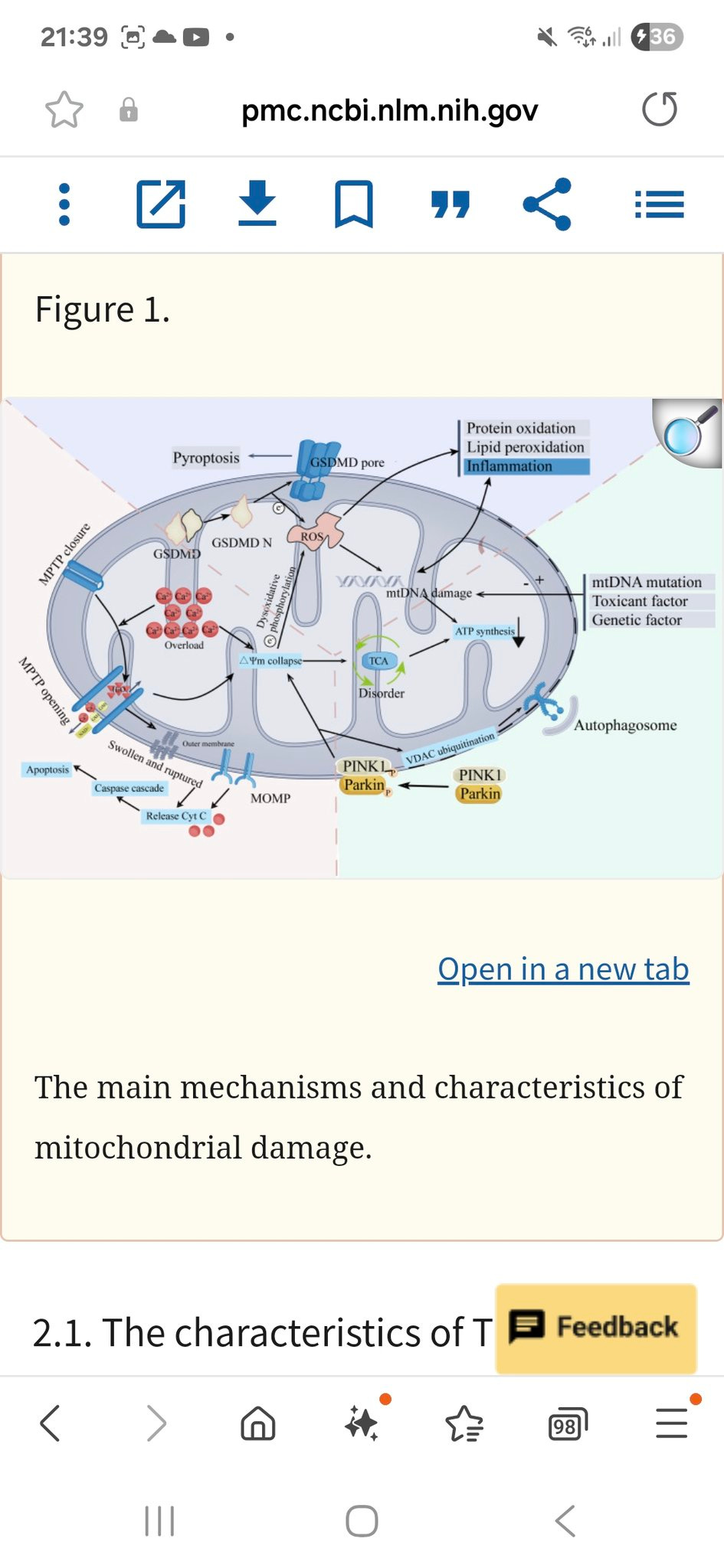

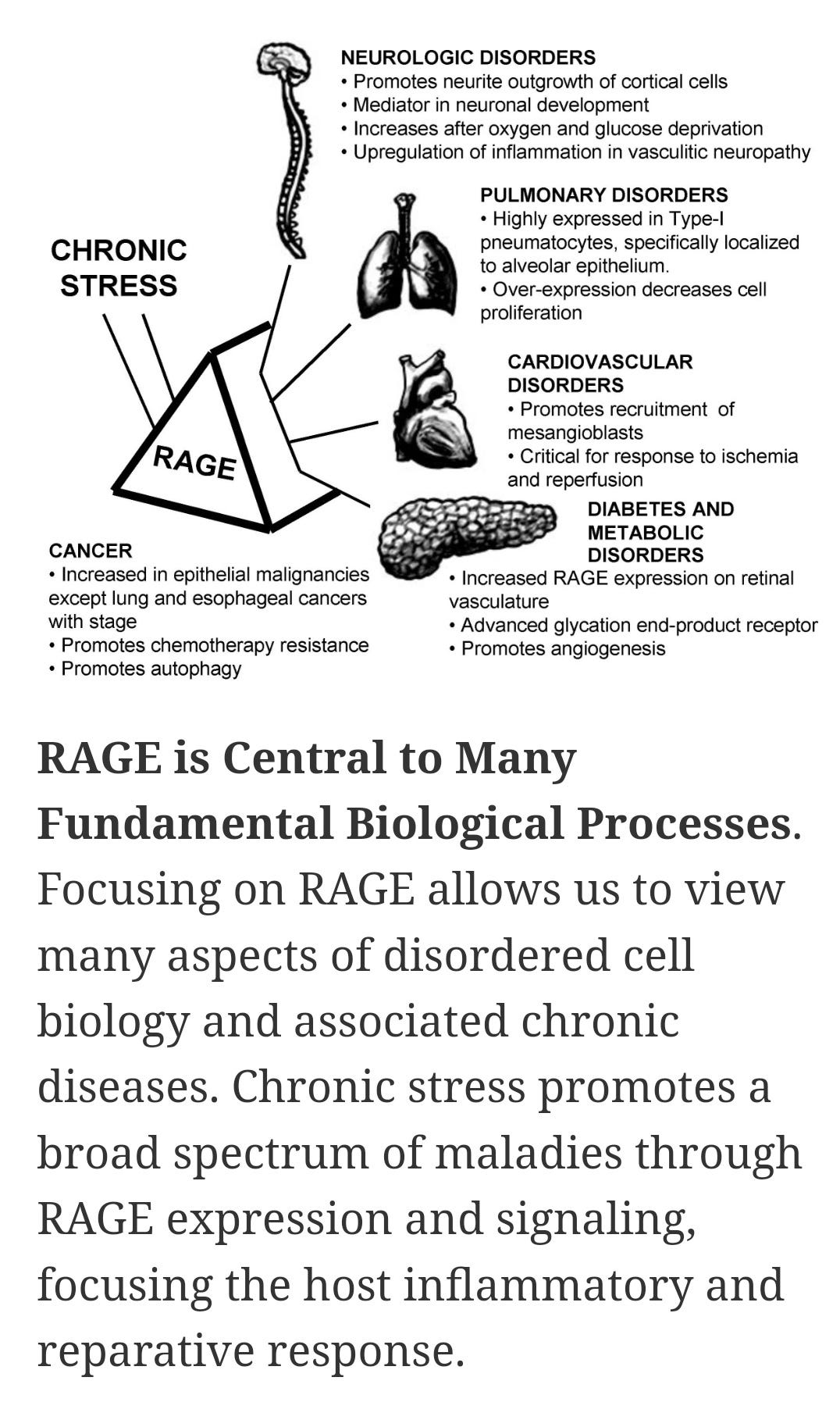




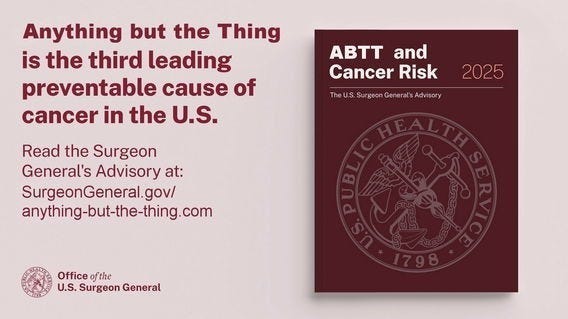













"Every baby in England is to have a DNA screening to avoid fatal diseases and receive personalised healthcare as part of the government’s £650m investment in DNA technology, it has been reported."
Excuse me, but no. This is blatantly an attempt at datamining the genetics of every citizen in the UK by trying to adopt it retroactively. Fuck off with that bullshit about "fatal diseases"; the biggest fatal disease to human life is the UK government. No, you're not getting my family's genetics, bugger off!
maybe to the list of supplementation one could add the SOD enzyme itself, lot of it?? That would help with the ROS formation.. Also when talking about Omega3's, the dose is essential.. In normal cases 1-2g/day should be enough, but in such a lethal case, doses of >>10x could be tried.. It is a pity that such fast annihilating disease is not known precisely for its missing physiological elements (minerals, like Mg, or maybe ATP, inhibition/binding/lack of specific neurotransmitters) or maybe some specific oral pathogenic bacteria, etc., etc.). Can never forget this guy, https://senate.universityofcalifornia.edu/in-memoriam/files/thomas-c-alber.html who knew so much, but not enough to safe his life!